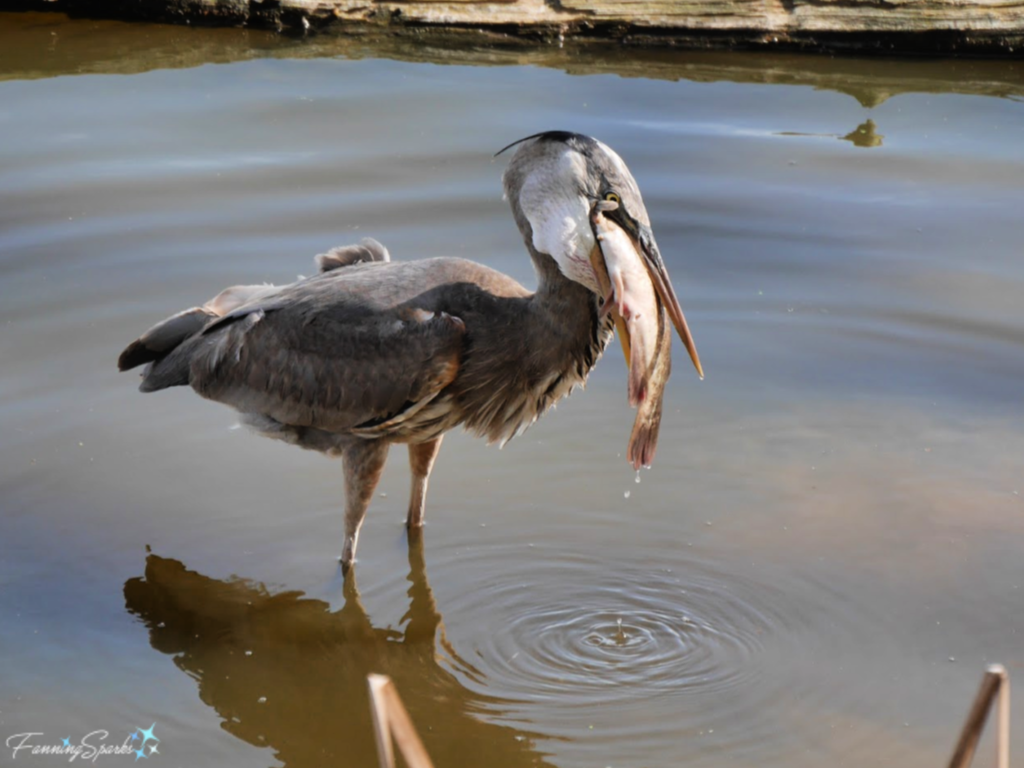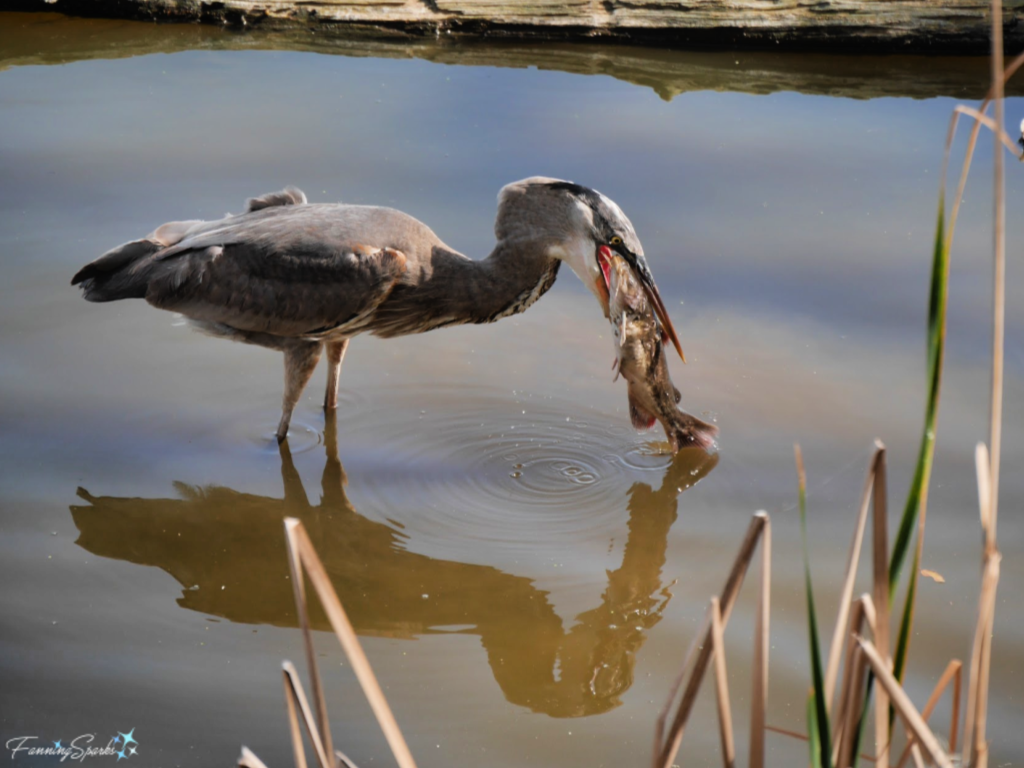In last week’s blog post, I shared a virtual visit to the flower fields of Lisse in the Netherlands. I’m going to stick with that theme and share another treasured travel memory. This week’s destination is the Aizu region of Japan, in Fukushima Perfecture, to see the cherry blossoms.
Flower viewing, known as hanami, is a beloved tradition in Japan. Every spring when the cherry trees bloom, people flock to the sakura (cherry blossoms) to admire and celebrate their fleeting beauty. The blossoms last only a week or two making them even more special. Bloom times vary from location to location and from variety to variety extending the overall season from late March to early May.

Many years ago I had the opportunity to partake in this beloved tradition. I was living in Singapore at the time and had a need to travel to Tokyo for business reasons. My colleague and I extended our trip over the weekend and joined a local tour group for the hanami trip. (Special thanks to my friends, and former colleagues, Judy and Xiaoyan!)
It’s no secret I love flowers so a trip celebrating cherry blossoms was guaranteed to be enjoyable. But it was so much more than I expected. The sakura were beautiful. The sights were picturesque and steeped in history. The tour was well organized and executed flawlessly. If I recall correctly, Judy and I were the only participants who did not speak Japanese. Luckily our friend Xiaoyan was able to translate for us. We spent Saturday night at a ryokan, a traditional Japanese hot springs inn, in Aizu Ashinomaki Onsen. We relaxed in the hot springs baths and feasted on a traditional multi-course dinner. Staying in a ryokan was an experience in and of itself. The trip was authentically Japanese and a once-in-a-lifetime experience!
Here are my favorite photos from my hanami trip in the Aizu region of Japan. In this lovely scene, the sakura are beautifully showcased by the moody waters, spring greenery and distant mountains.
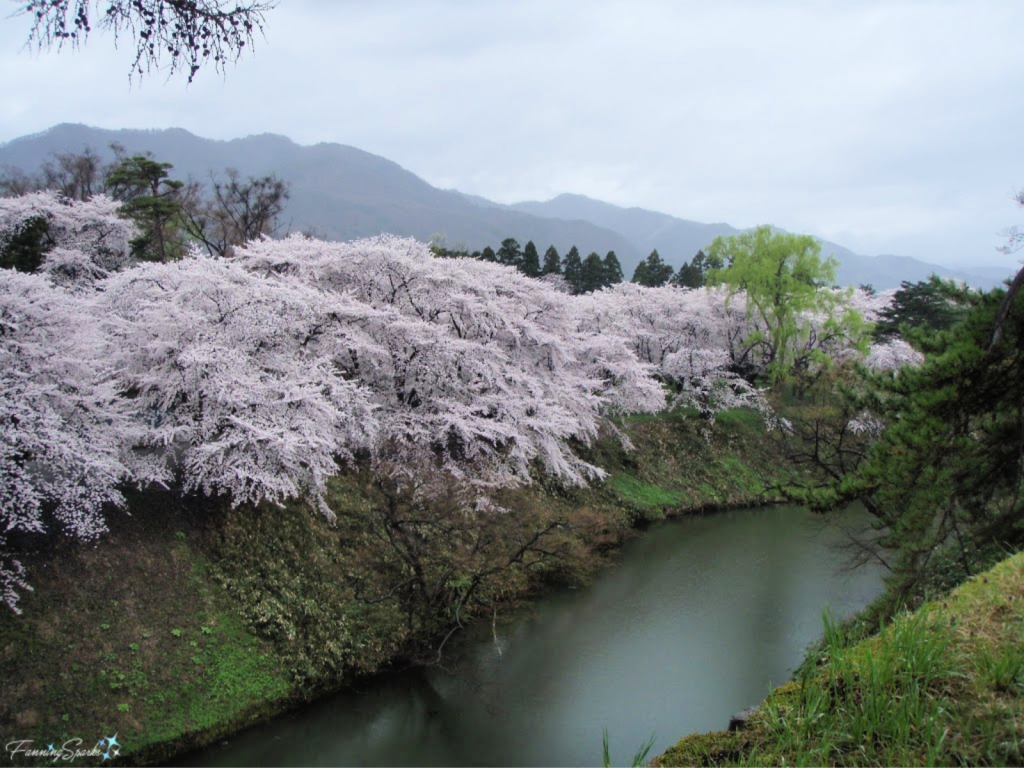
Here’s a closer look at the beautiful pink and white blossoms suspended over the water.

One of the places we visited was Tsuruga Castle in the city of Aizu-Wakamatsu. The original castle, which was built over 600 years ago, played a key role in samurai and medieval cultures.
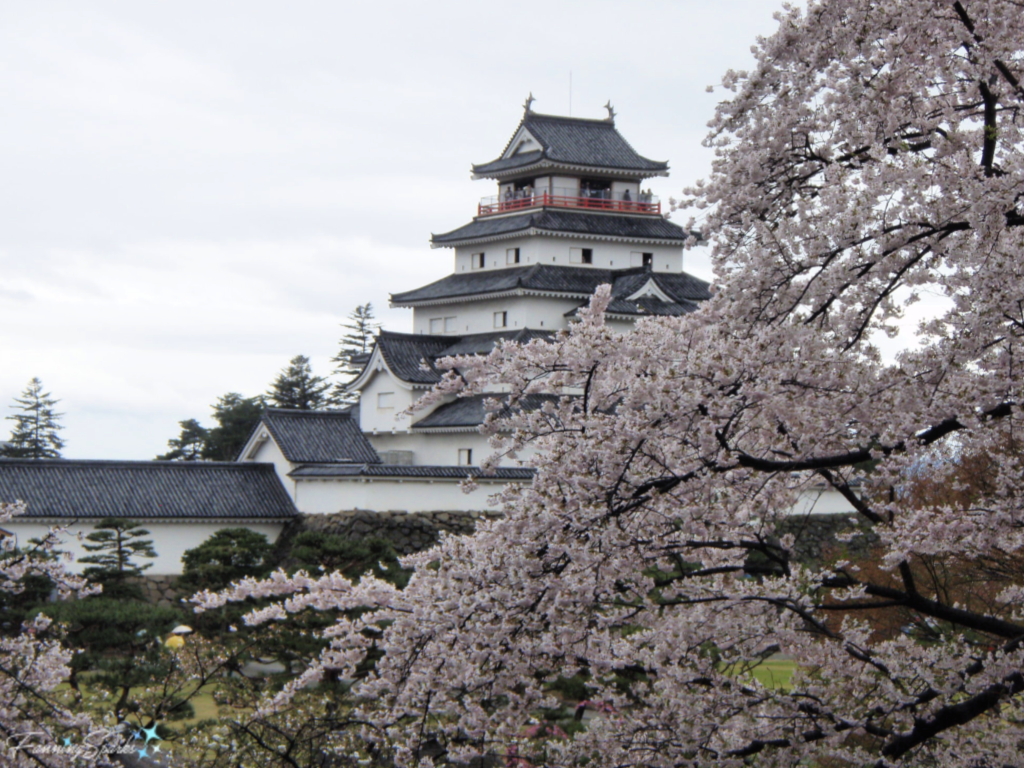 The ancient stone walls provide a striking contrast for the delicate flowers.
The ancient stone walls provide a striking contrast for the delicate flowers.
Another highlight of the tour was visiting the Miharu Takizakura. This ancient cherry tree, a weeping higan, is over 1,000 years old. It is designated a National Natural Monument of Japan. It is absolutely stunning!
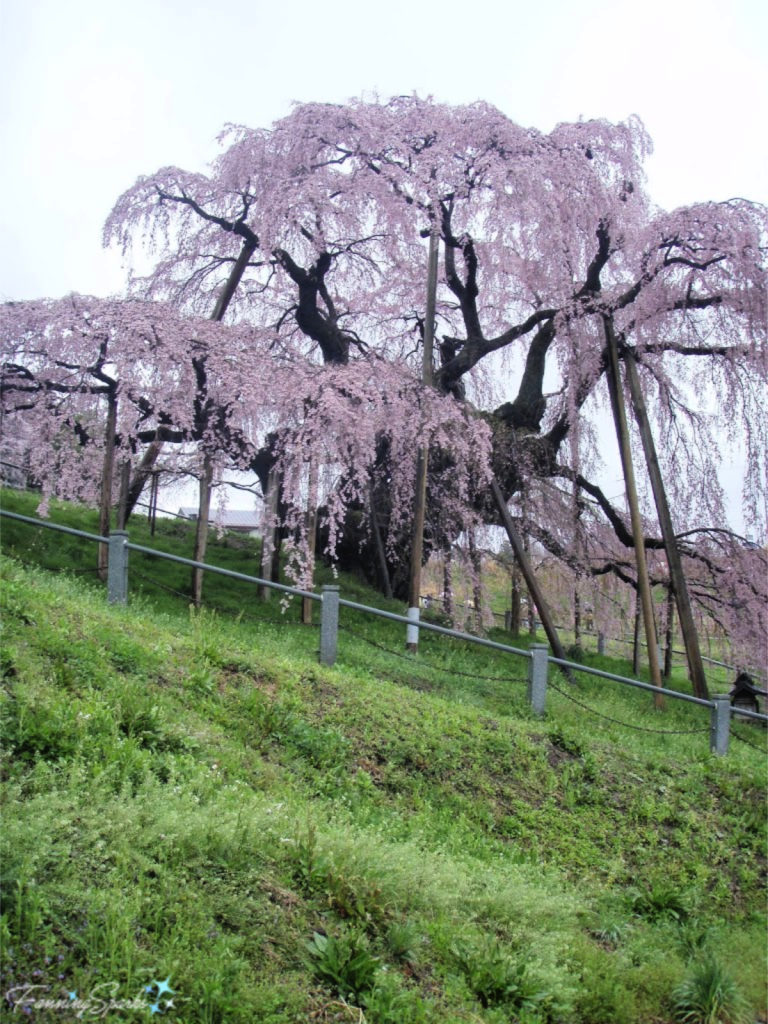 Understandably, we were not the only people who wanted to view this ancient wonder. In the below photo you can see visitors politely queuing up for their turn to get closer to the tree.
Understandably, we were not the only people who wanted to view this ancient wonder. In the below photo you can see visitors politely queuing up for their turn to get closer to the tree.

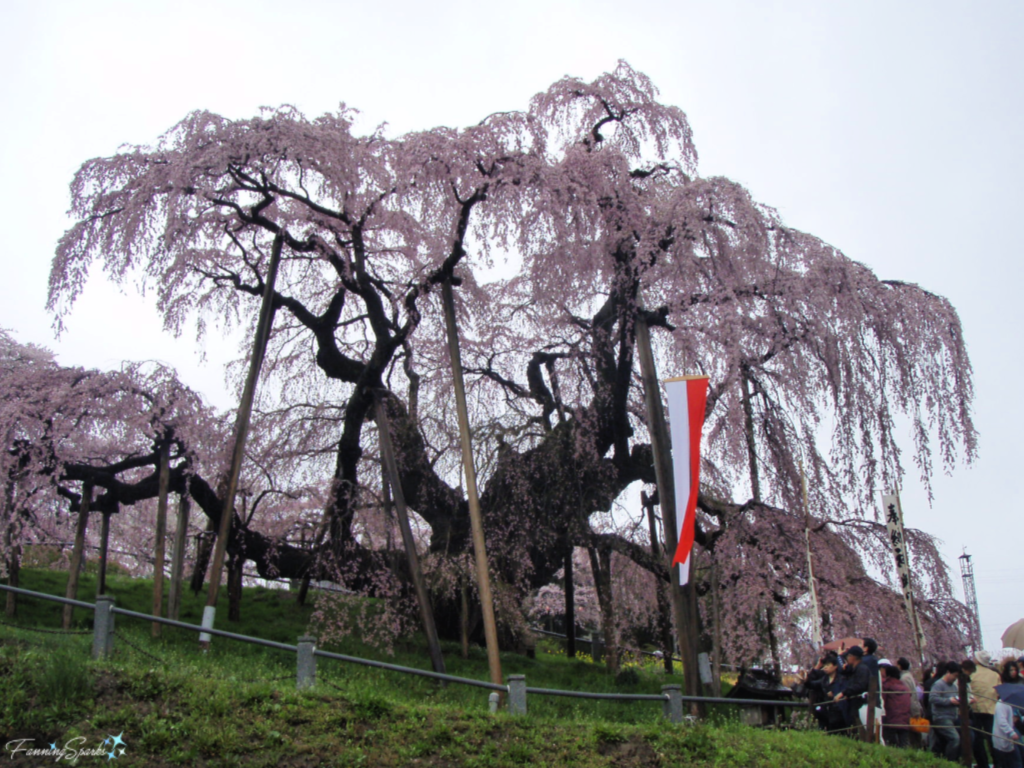
These sites were spectacular but I was most delighted to find a quiet country lane near our ryokan. I spent a few early morning hours under my own sakura canopy.
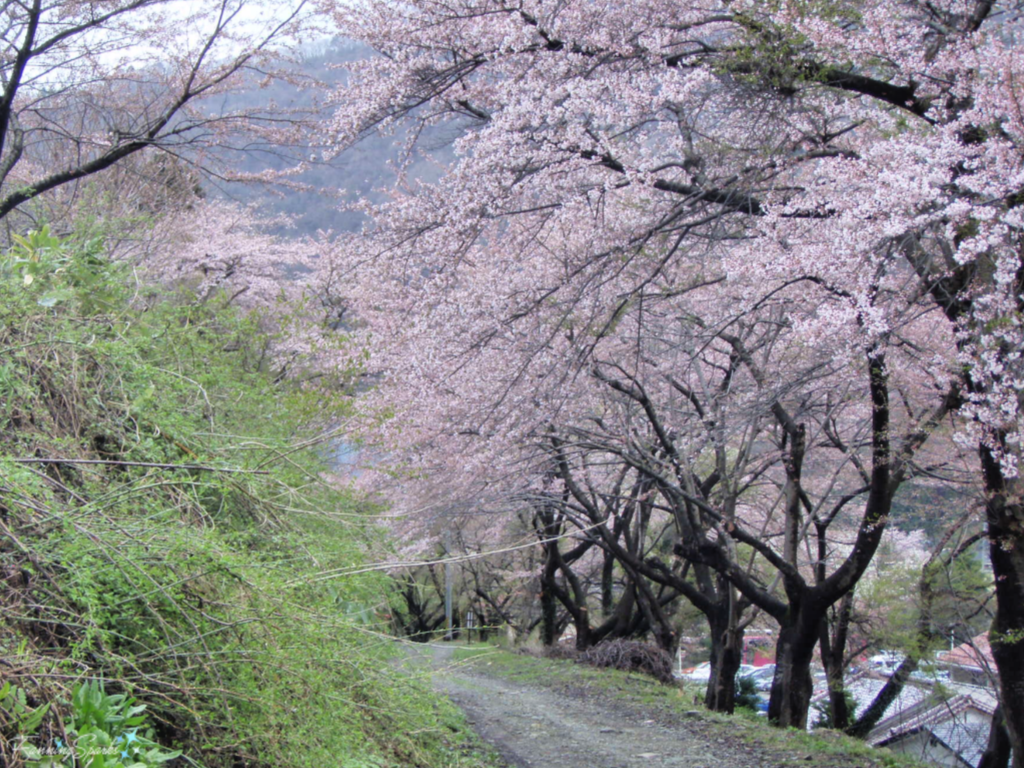

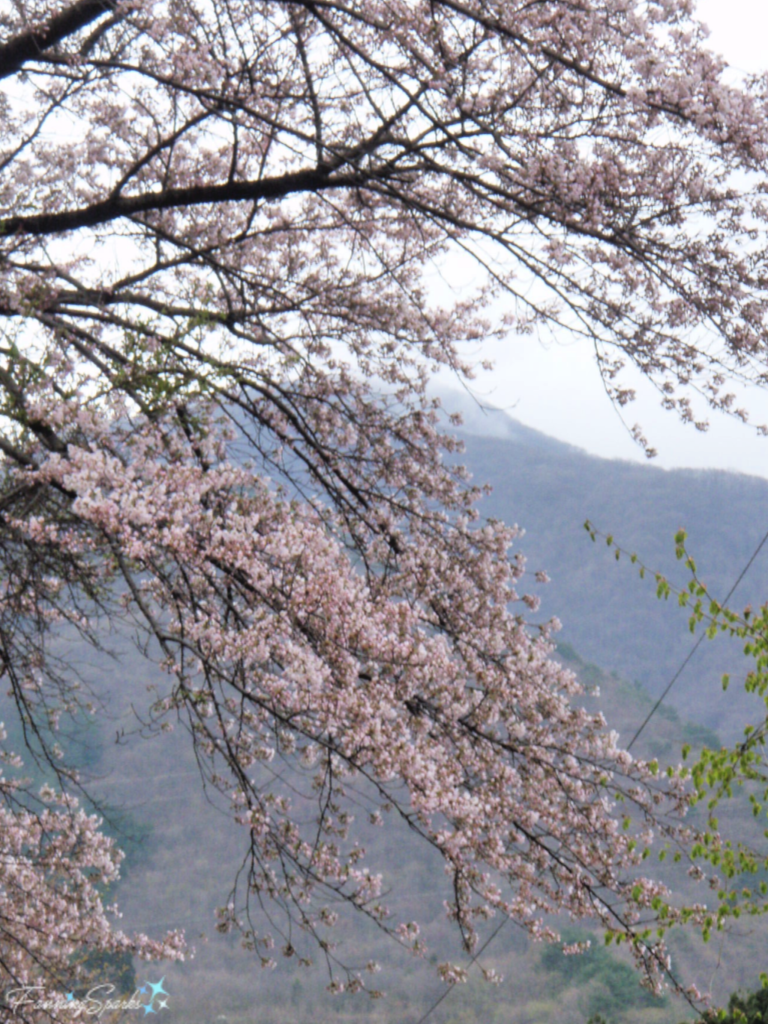
Without a doubt, if I were to take this trip today I would have a lot more (and I like to think better) photos to share. Regardless, I hope this post helps convey the magic of the sakura. My hanami experience taught me that nature’s seasons are cause for celebration. The cycles of the natural world are reassuringly predictable—spring will come and the cherry trees will bloom. No matter where I’m located, I look for their fleeting beauty. Here are a few more recent sakura photos.
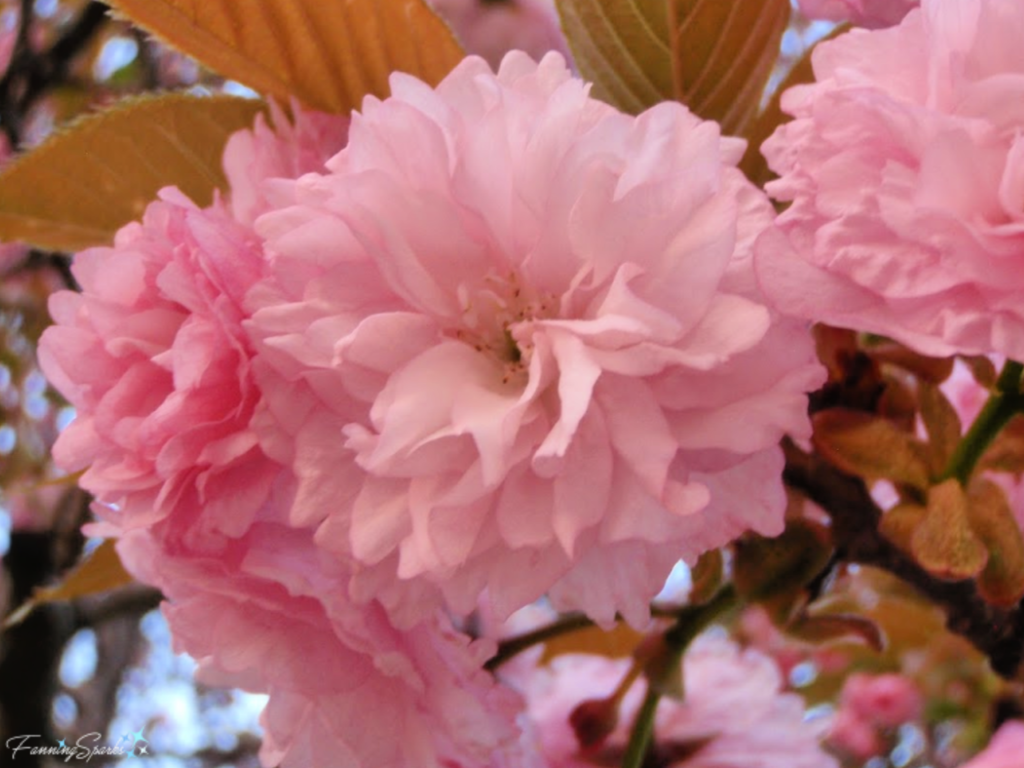
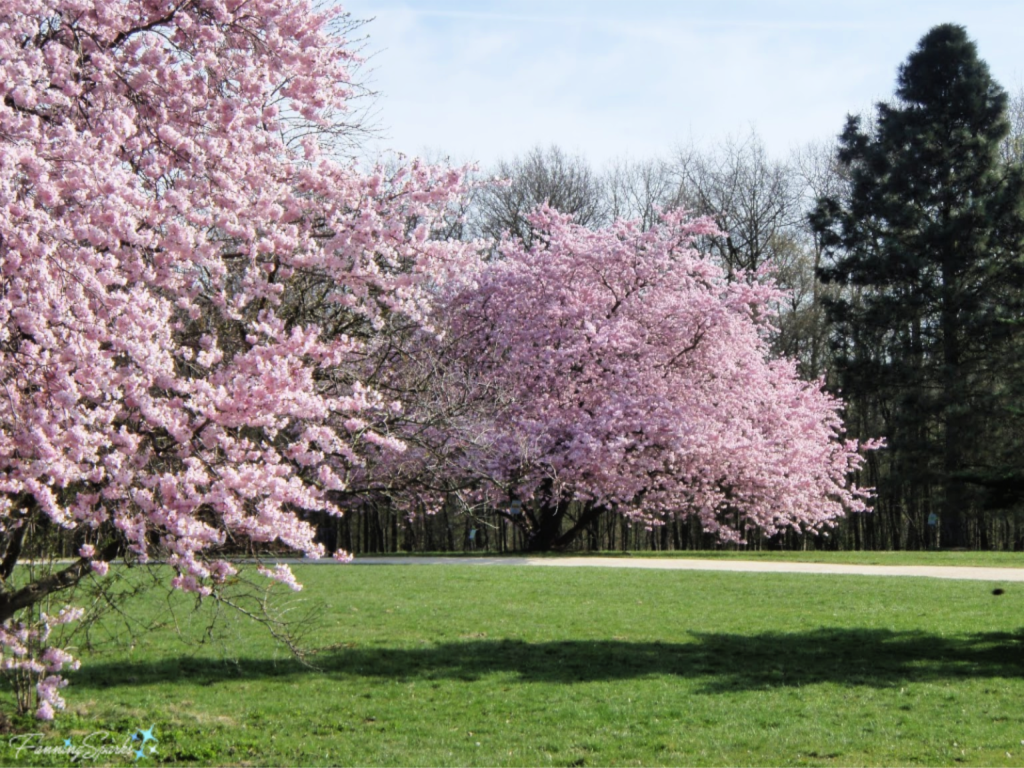
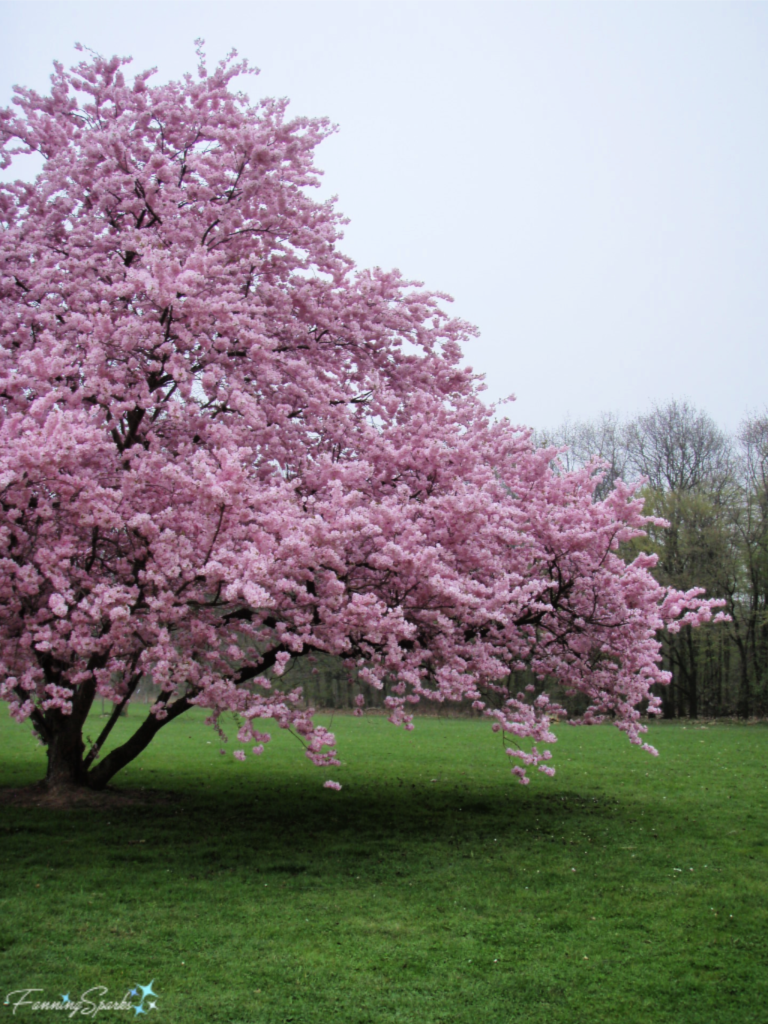
More Info
You can learn more about hanami and the sites mentioned in this post on the Japan Guide website.
You may also enjoy the following posts:
. A Virtual Visit to Lisse about the flower fields of Lisse in the Netherlands
. The Allure of the Waterlily includes a visit to the village of Giverny France
. Charleston’s Glorious Window Boxes showcases spring in this beloved city of the US Southeast
. Spring Into a Garden Tour features the springtime gardens of Athens Georgia
. Camellia Road Trip shares a recent road trip throughout the US Southeast to visit 5 outstanding camellia gardens.
Today’s Takeaways
1. The cycles of the natural world are reassuringly predictable—especially in uncertain times.
2. Specific flowers can bring to mind special places and memories.
3. Consider reliving your own travel memories while you stay-in-place.



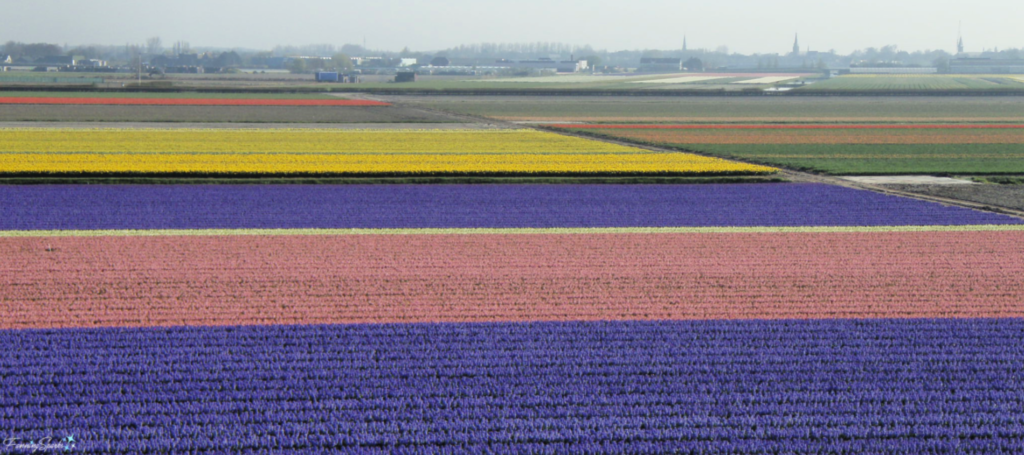
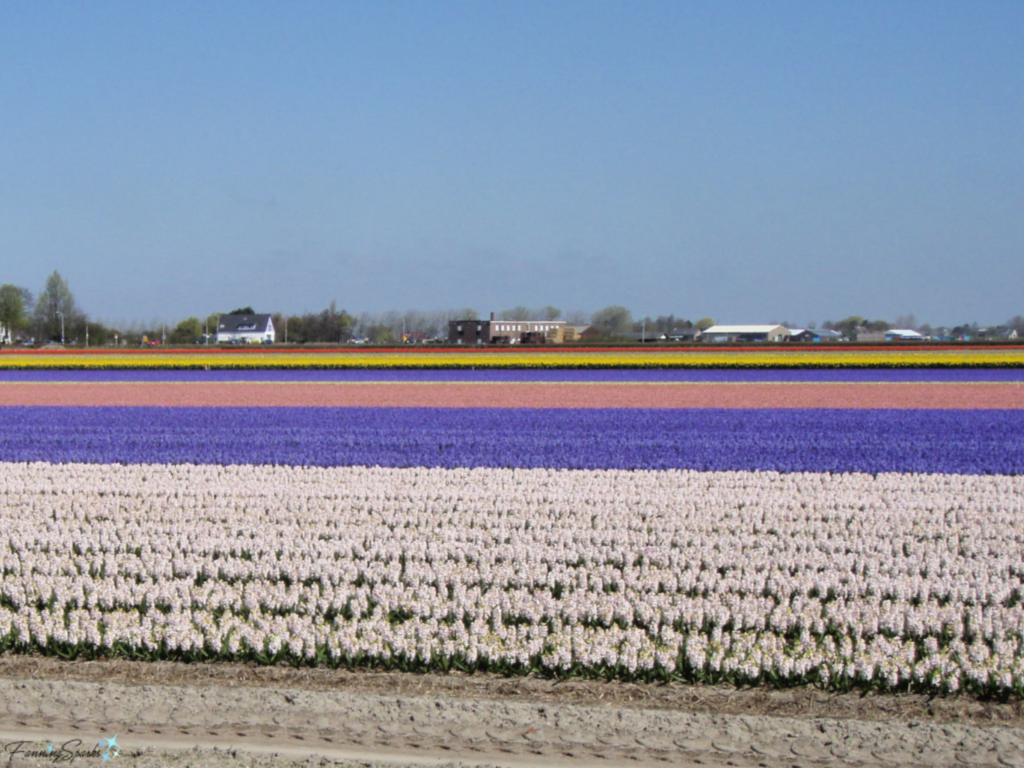
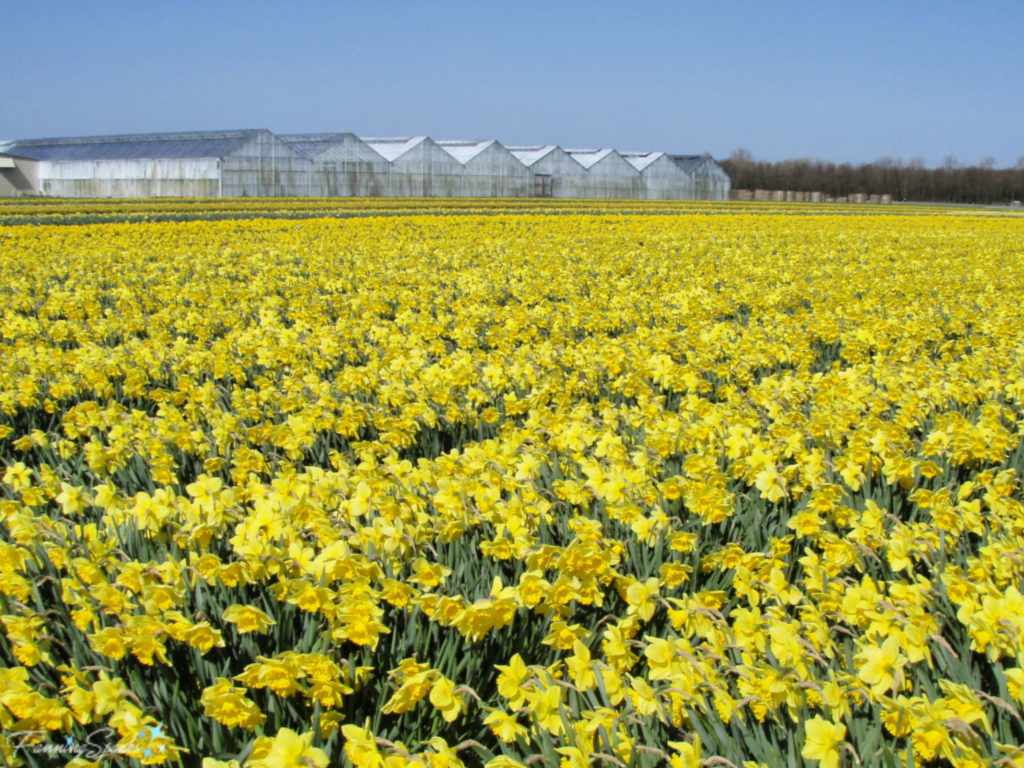

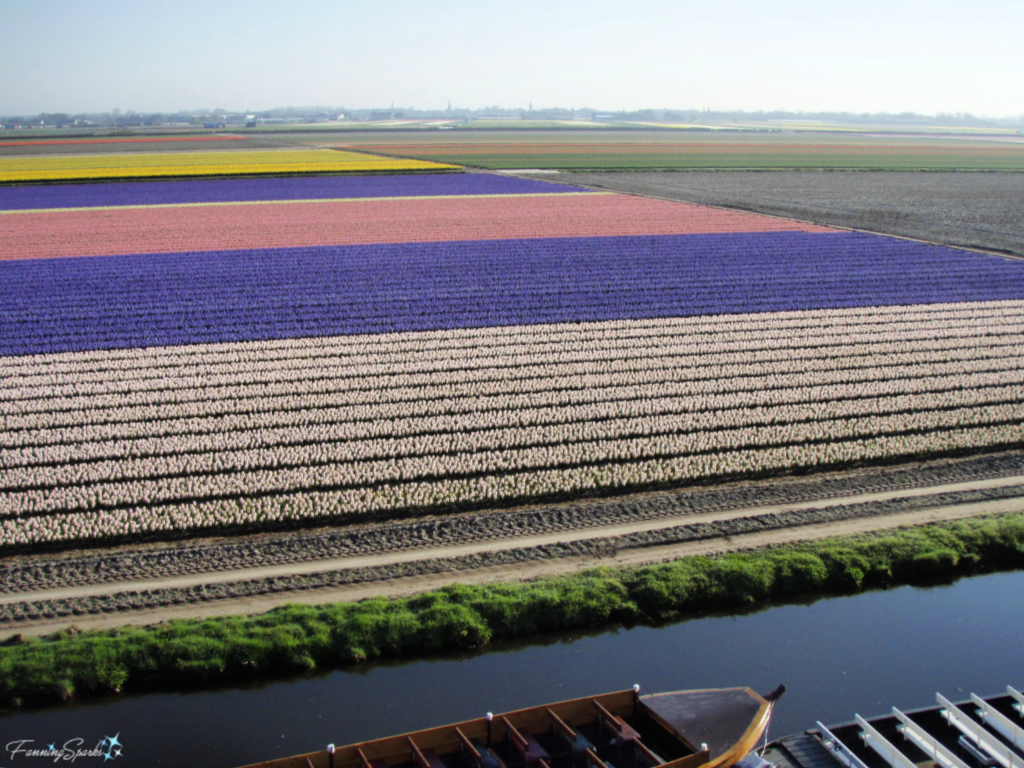
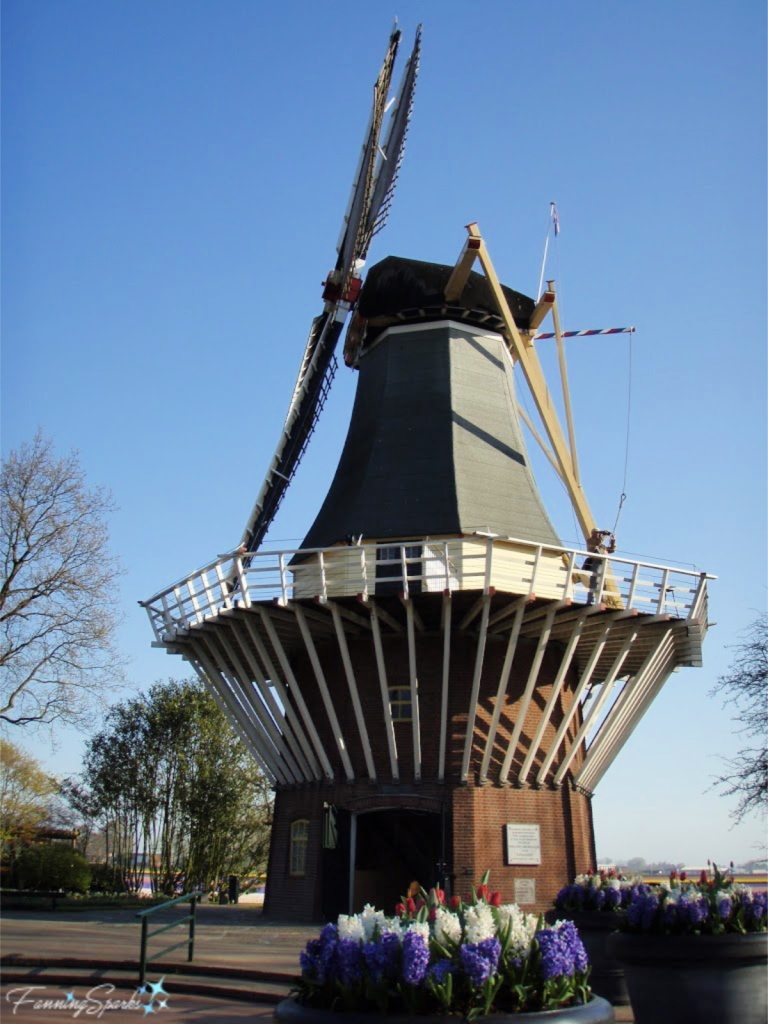
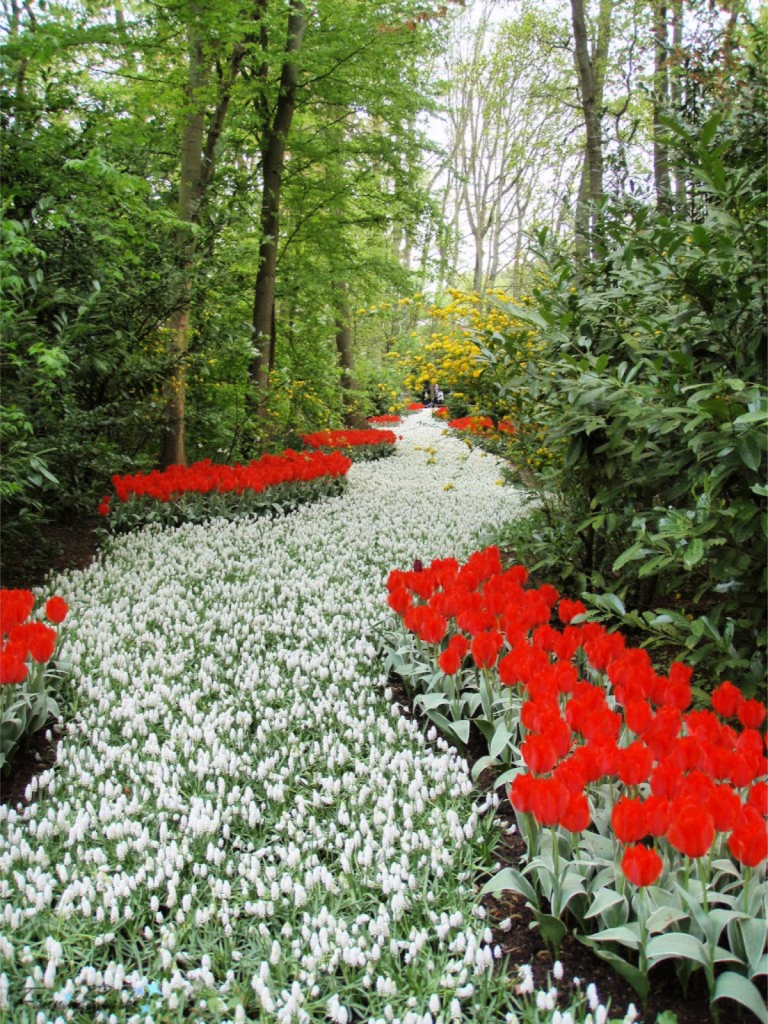
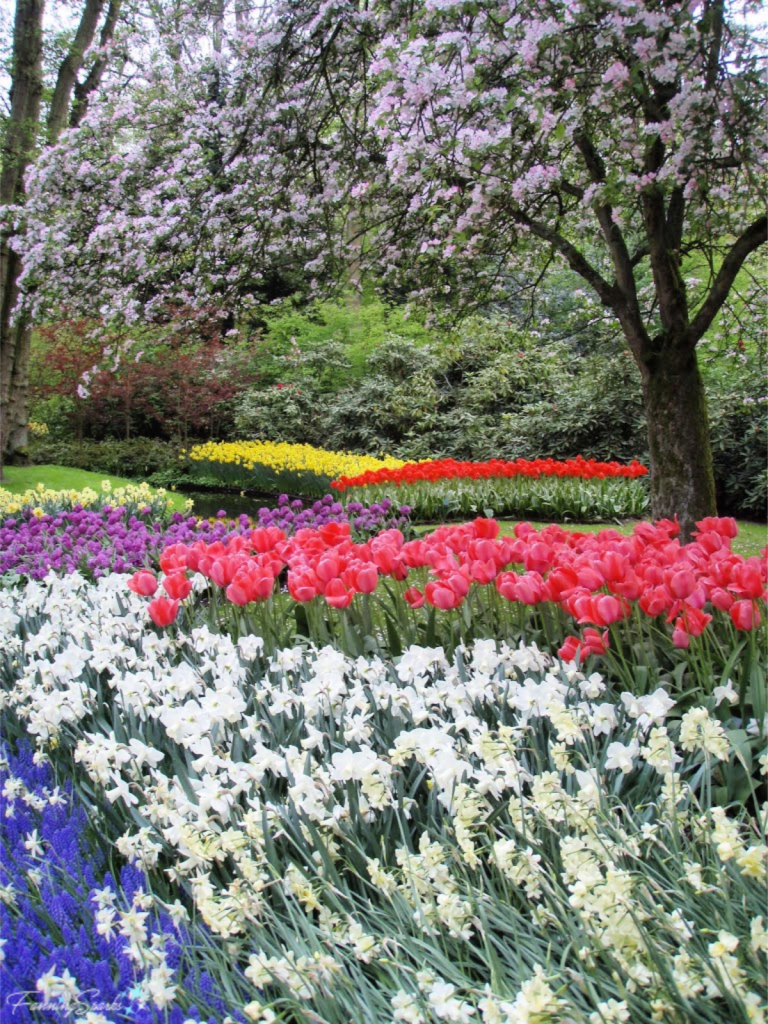
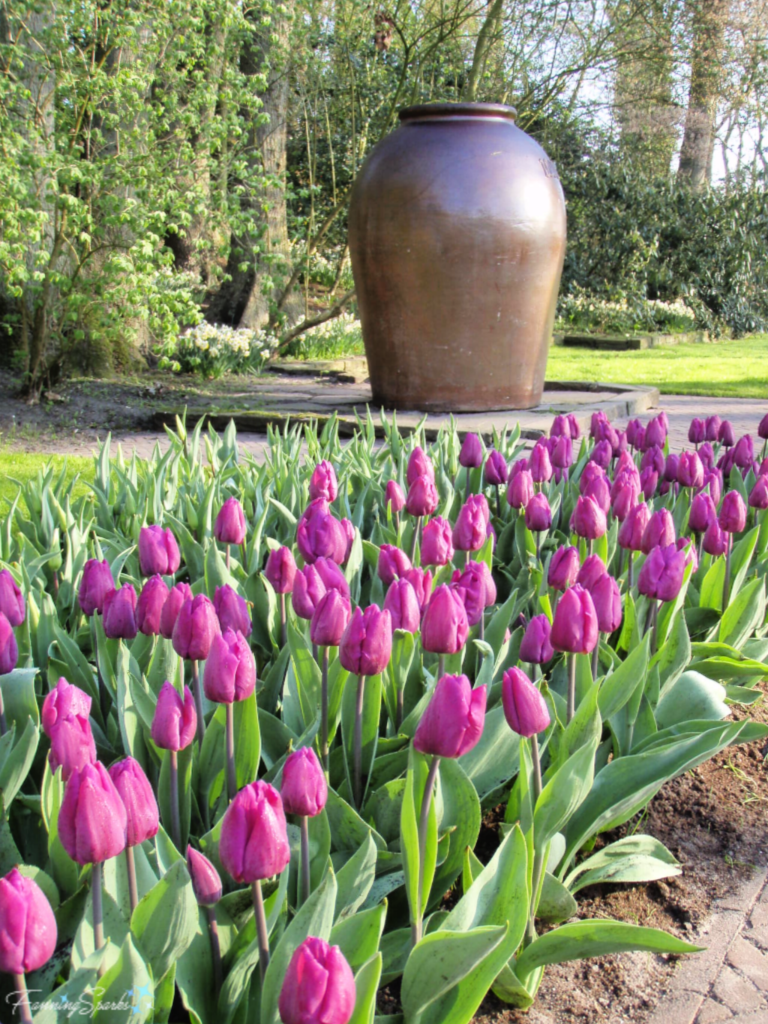
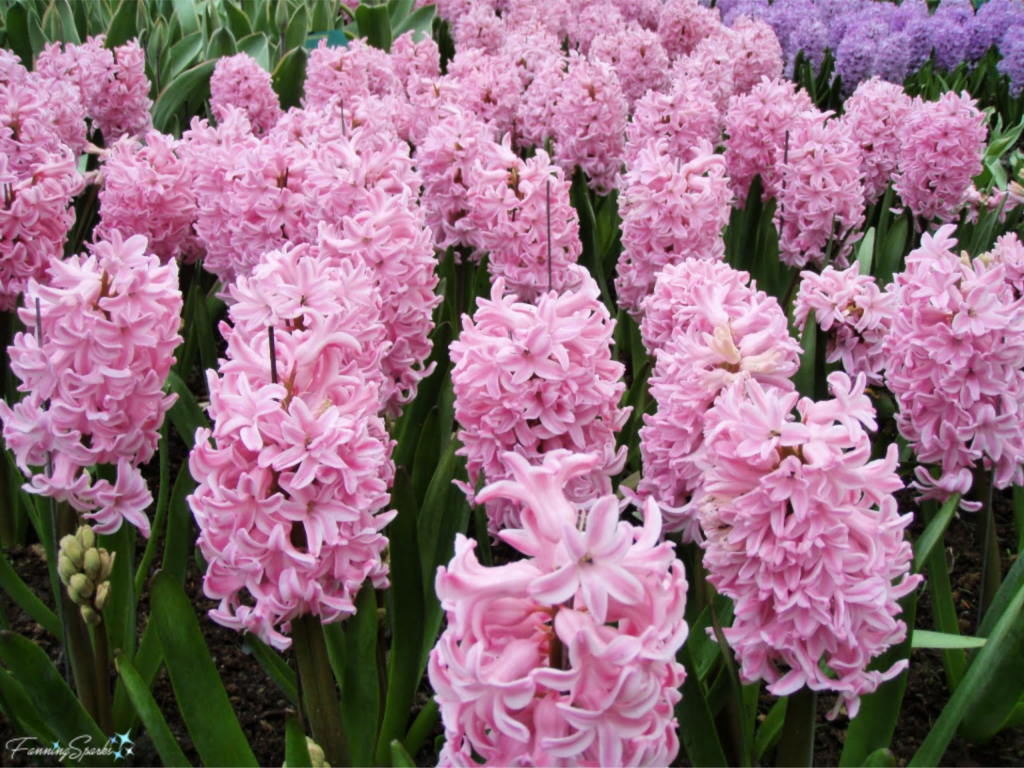
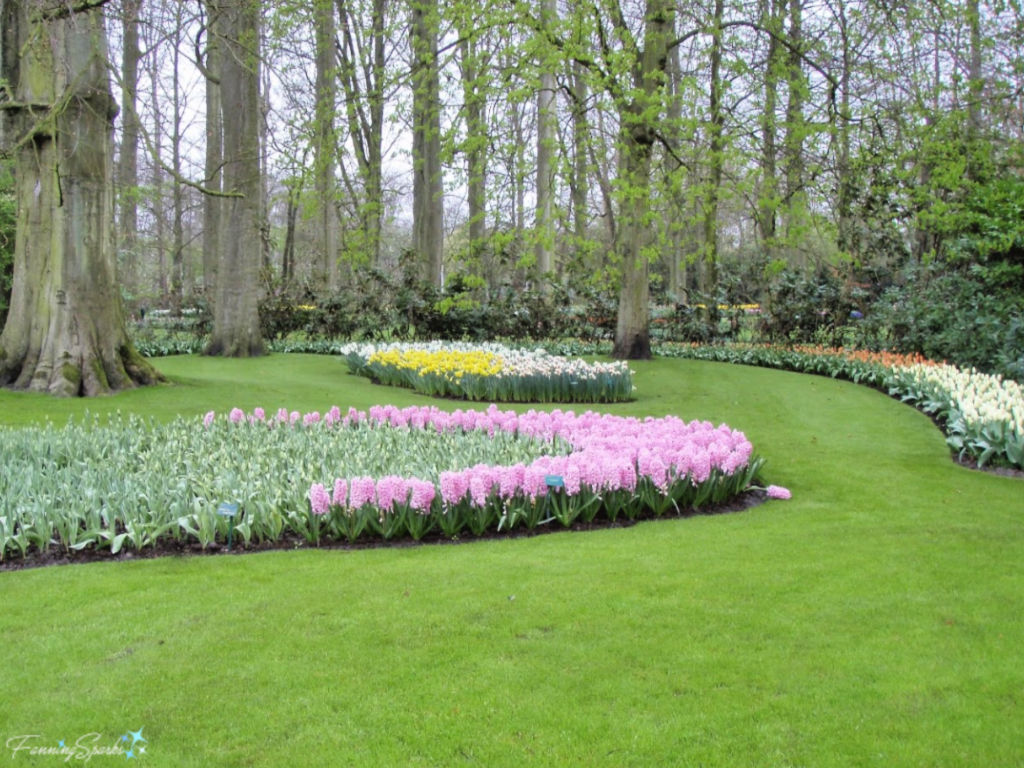

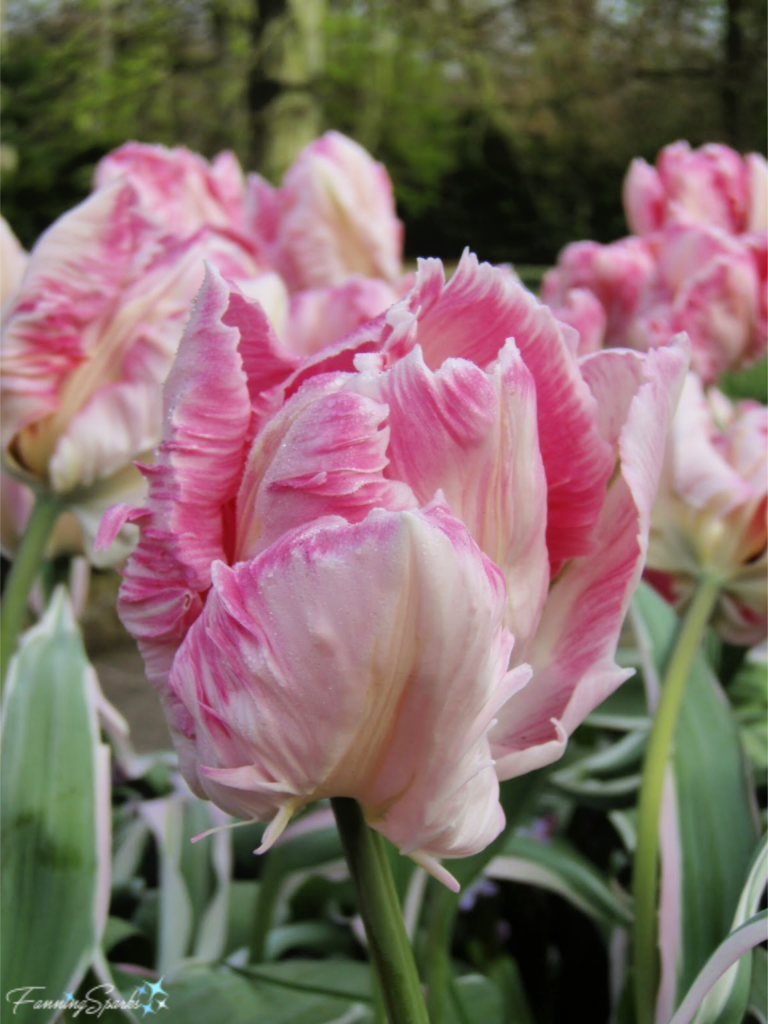
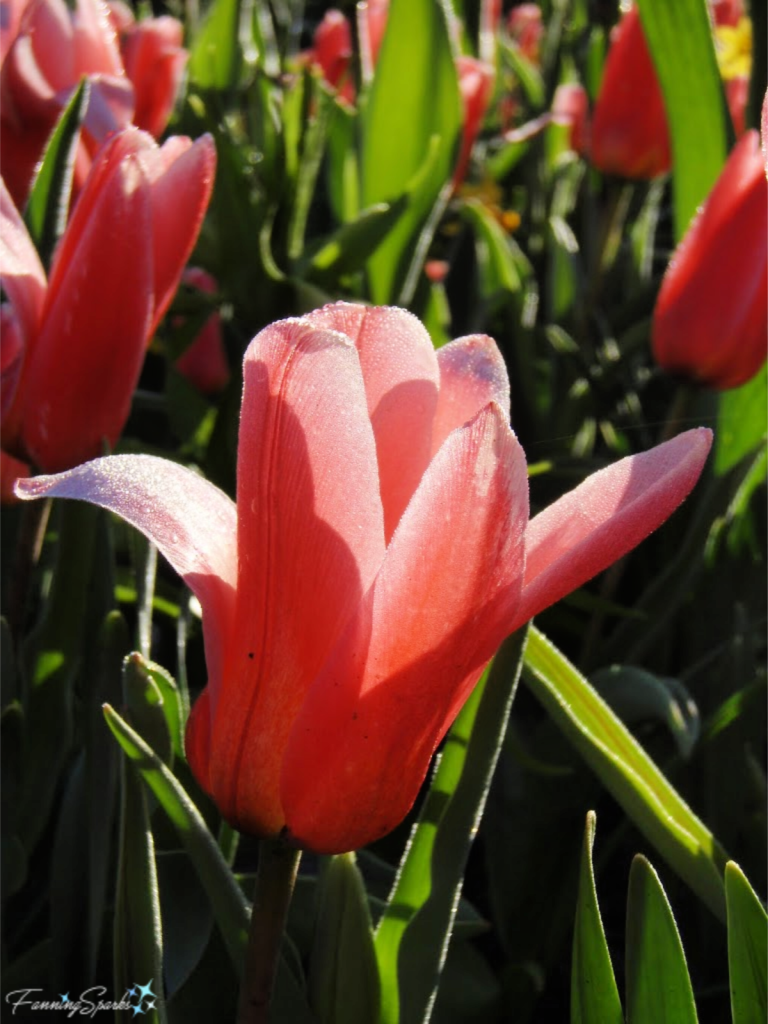


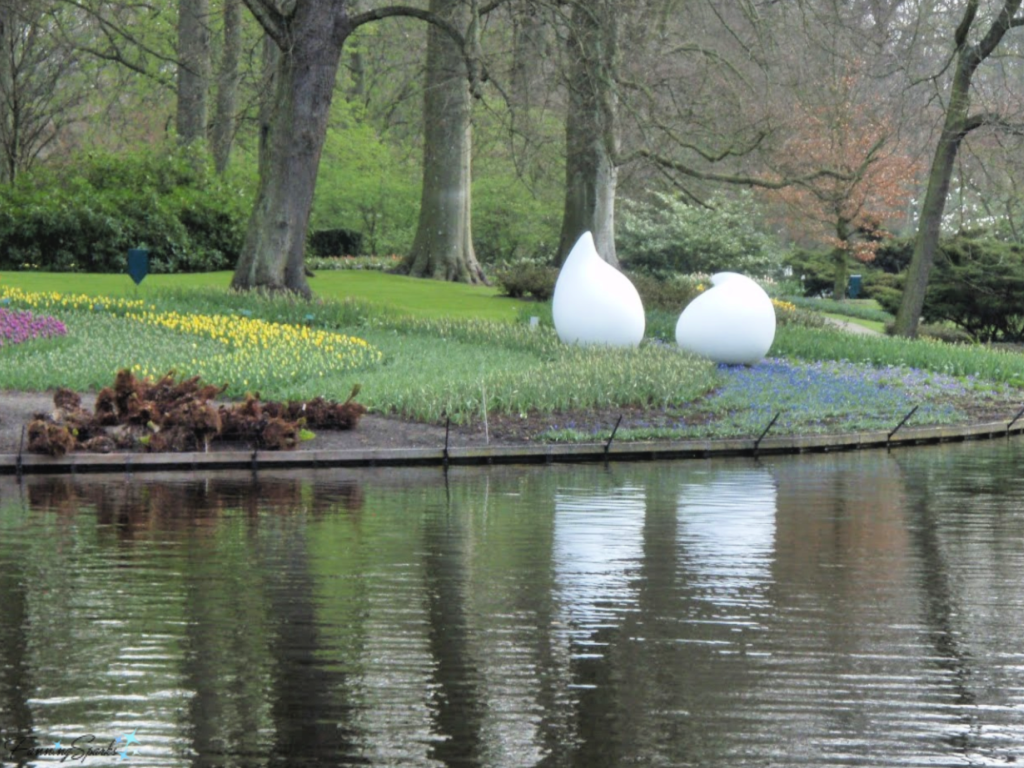
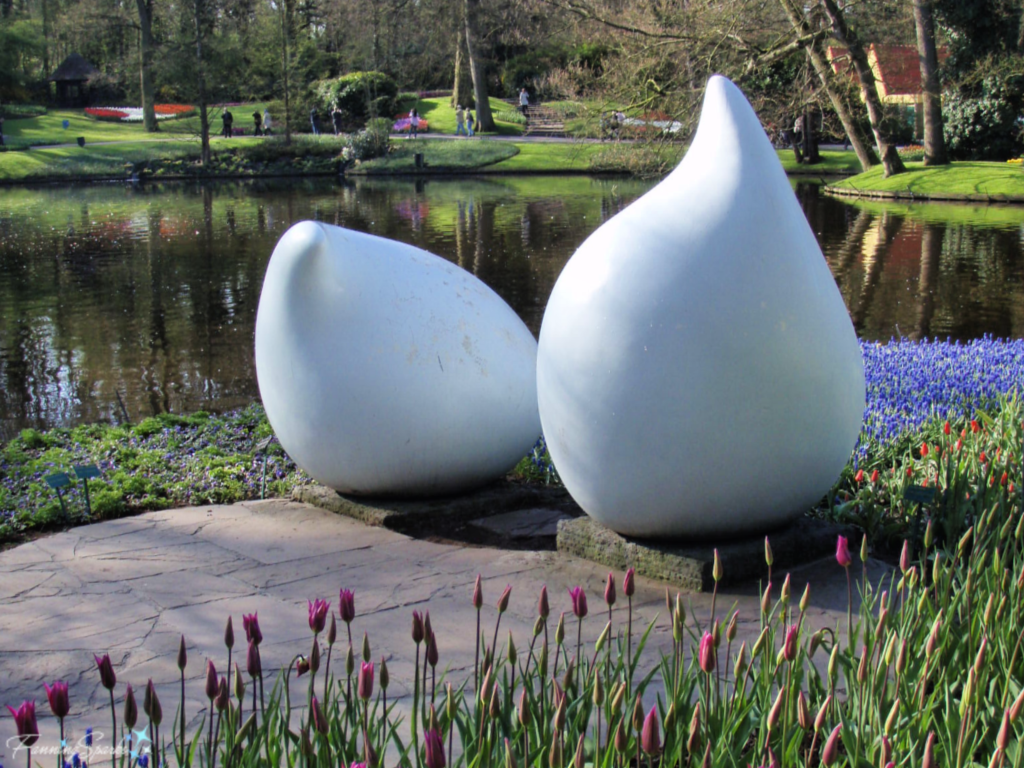
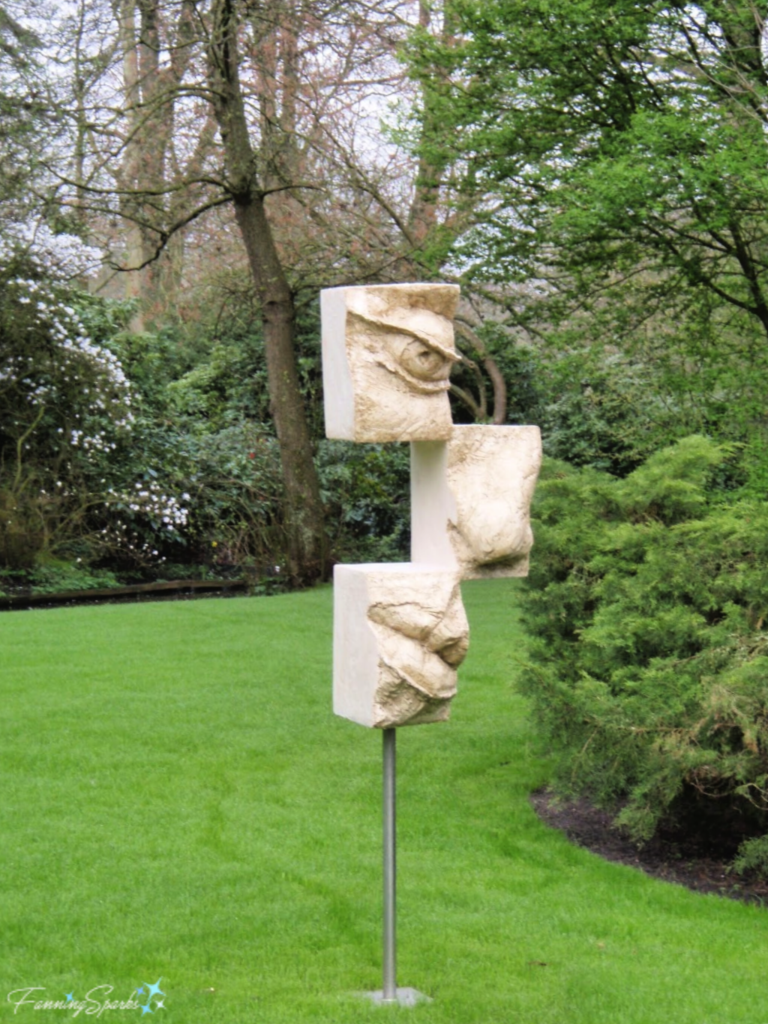
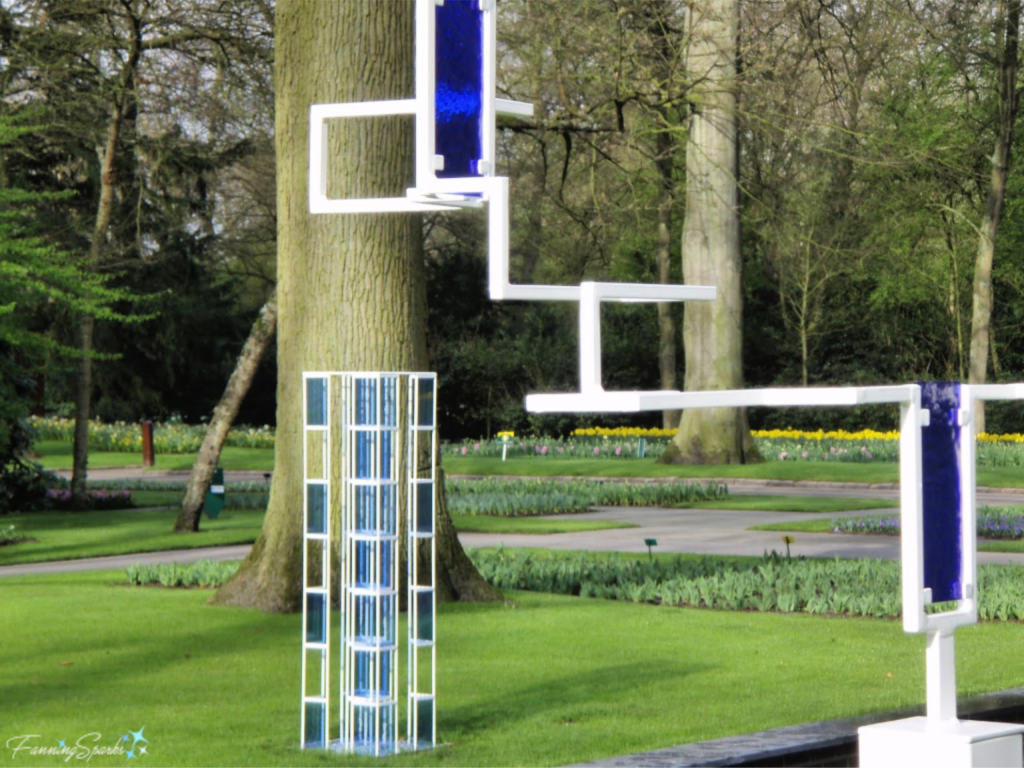
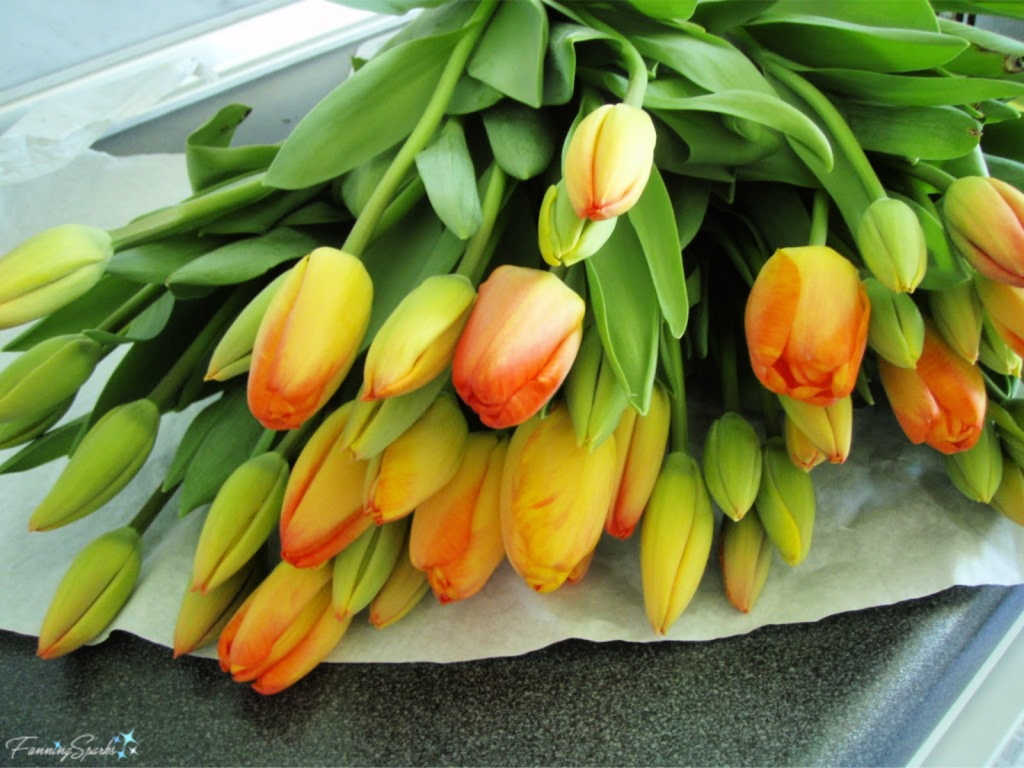 The generously-sized bouquet filled several vases shown here in the kitchen of our flat in Cologne.
The generously-sized bouquet filled several vases shown here in the kitchen of our flat in Cologne.
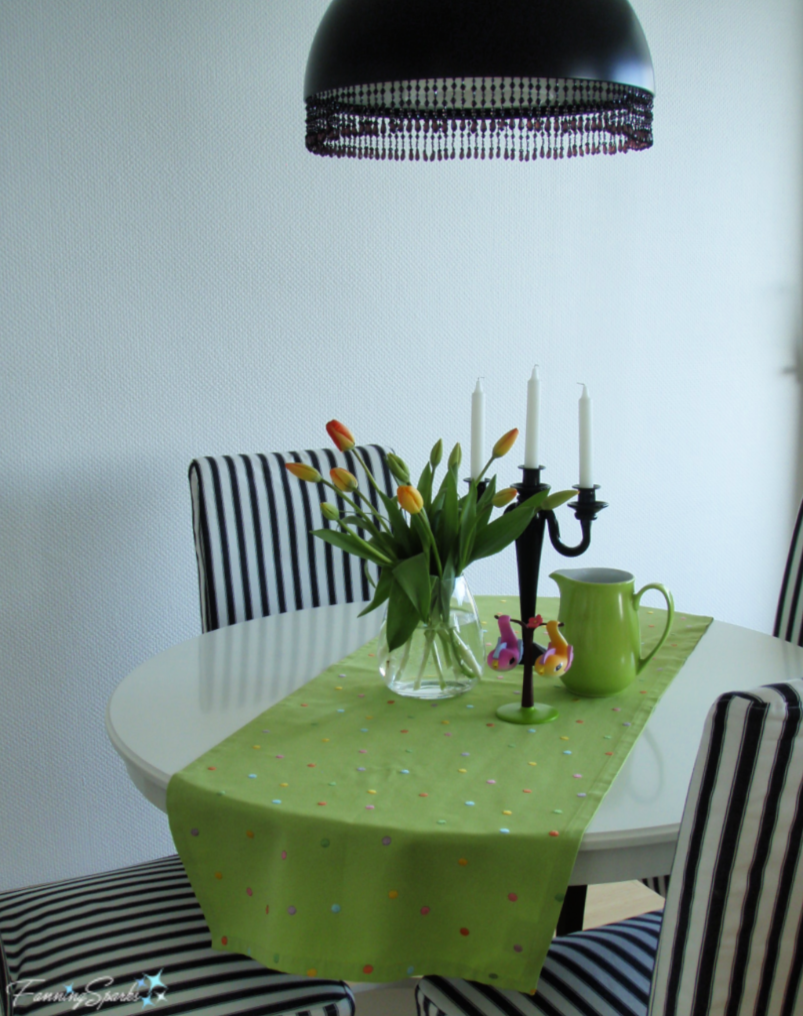

 I’ve also added a series of index pages—one for each category. These are accessible from the boxes in the sidebar at the right of the blog page. The index page shows the posts by sub-category at a glance. It’s an alternative way to see all posts for a particular subject. I’ve also switched out the category cover photos to keep things fresh and interesting. Here’s a screenshot of the TRAVEL index page.
I’ve also added a series of index pages—one for each category. These are accessible from the boxes in the sidebar at the right of the blog page. The index page shows the posts by sub-category at a glance. It’s an alternative way to see all posts for a particular subject. I’ve also switched out the category cover photos to keep things fresh and interesting. Here’s a screenshot of the TRAVEL index page.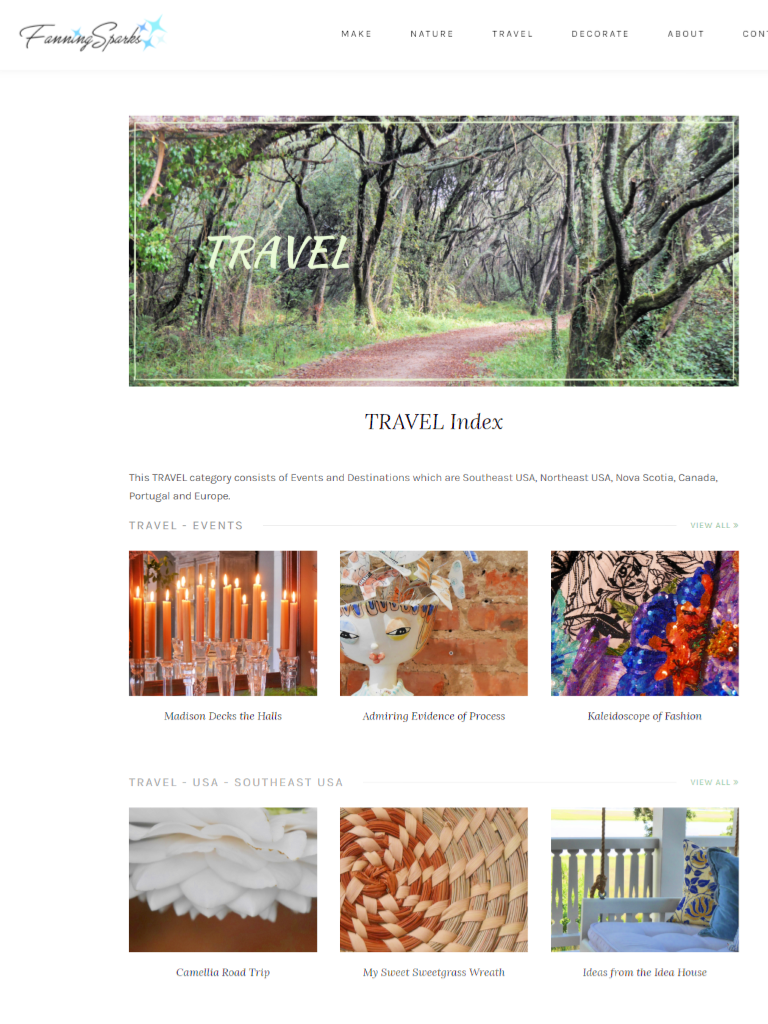
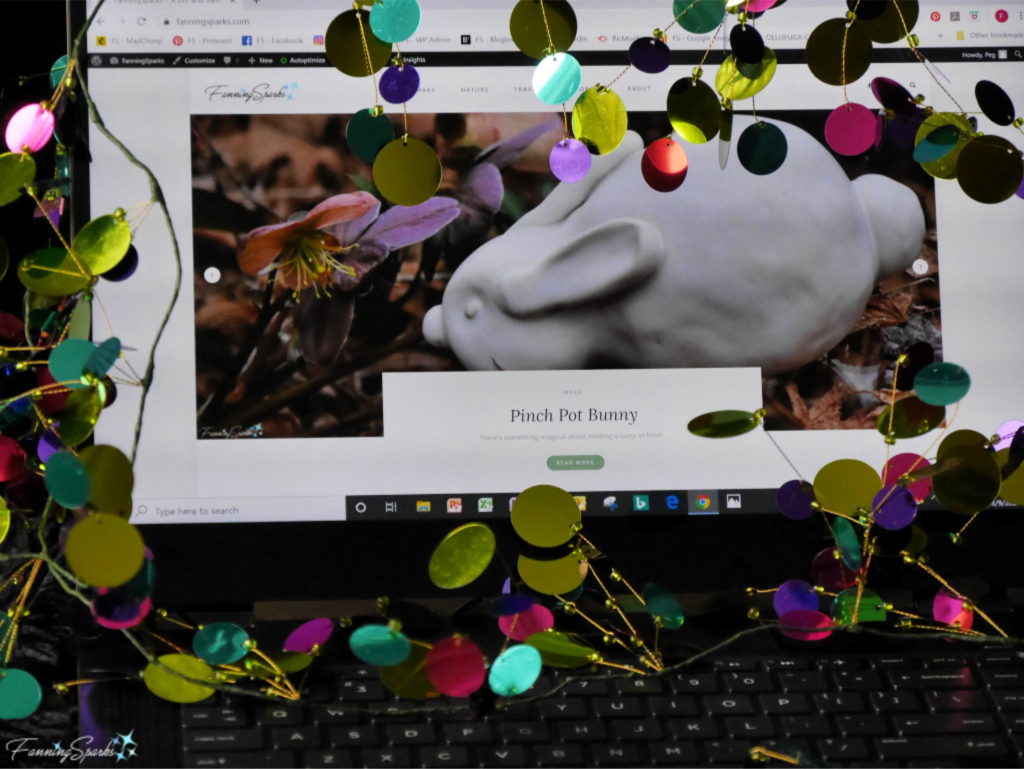 The viewing statistics for the blog indicate the audience is growing. Yay! Over 9,000 unique users have visited the blog since it originally launched. Of those 9,000 visitors, about 3,000 visited in the first year and double that number visited in the second year. In December 2019, the blog hit a new record with over 1,000 visitors in the month—a significant milestone for this little blog!
The viewing statistics for the blog indicate the audience is growing. Yay! Over 9,000 unique users have visited the blog since it originally launched. Of those 9,000 visitors, about 3,000 visited in the first year and double that number visited in the second year. In December 2019, the blog hit a new record with over 1,000 visitors in the month—a significant milestone for this little blog!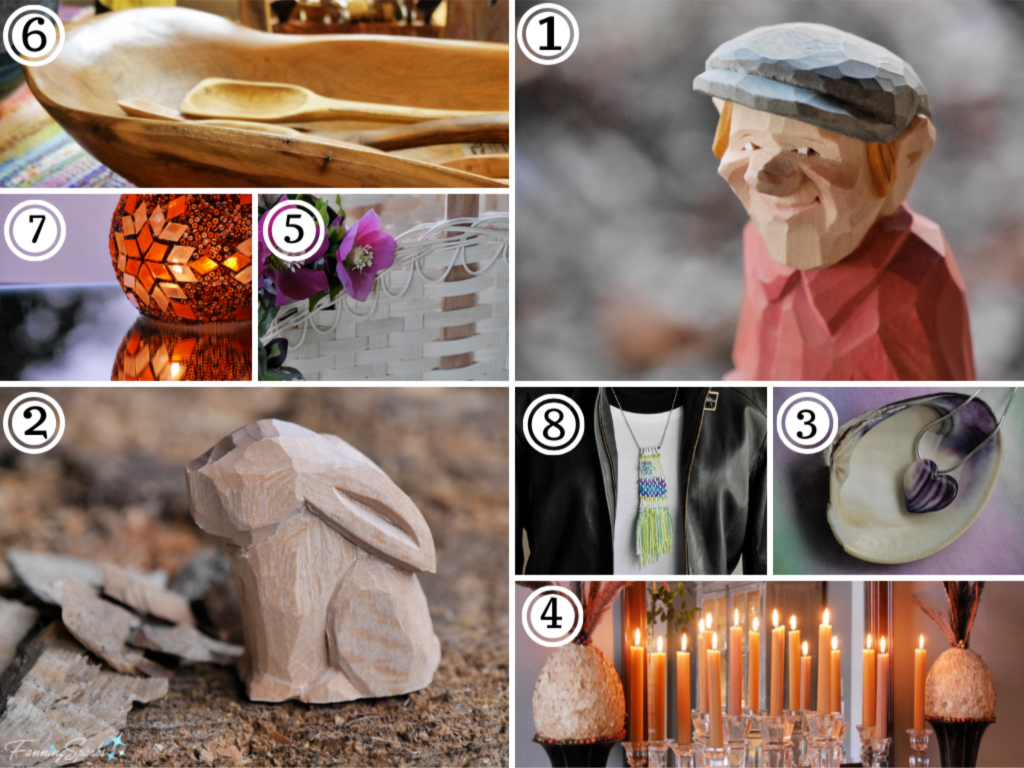 1
1 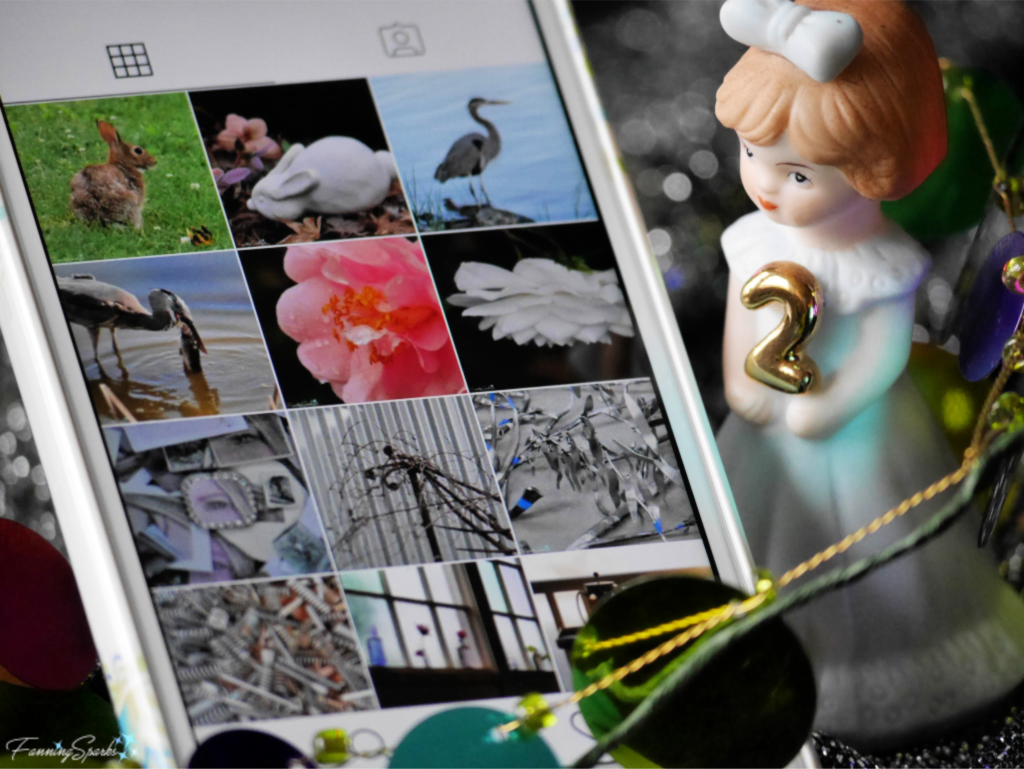 FanningSparks has a presence on several popular platforms including Instagram, Facebook, Pinterest and Bloglovin’.
FanningSparks has a presence on several popular platforms including Instagram, Facebook, Pinterest and Bloglovin’.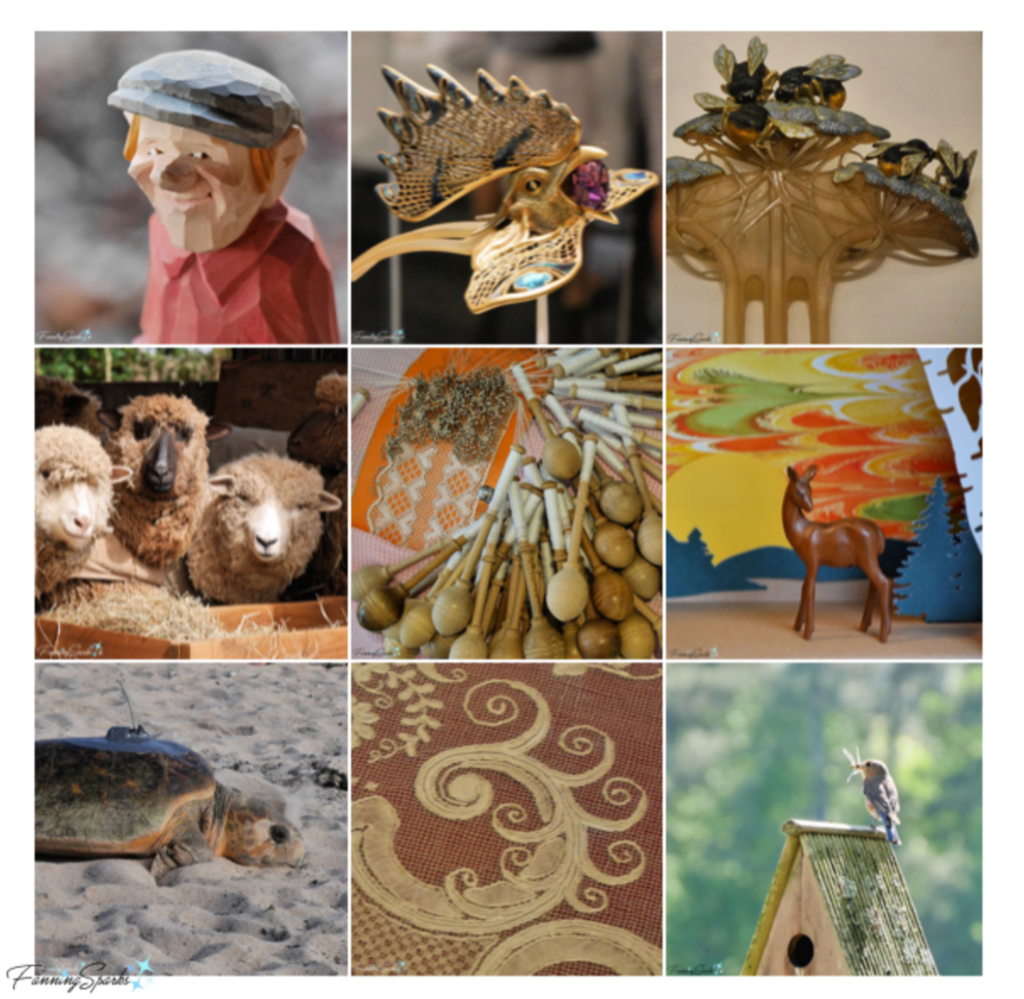 The
The 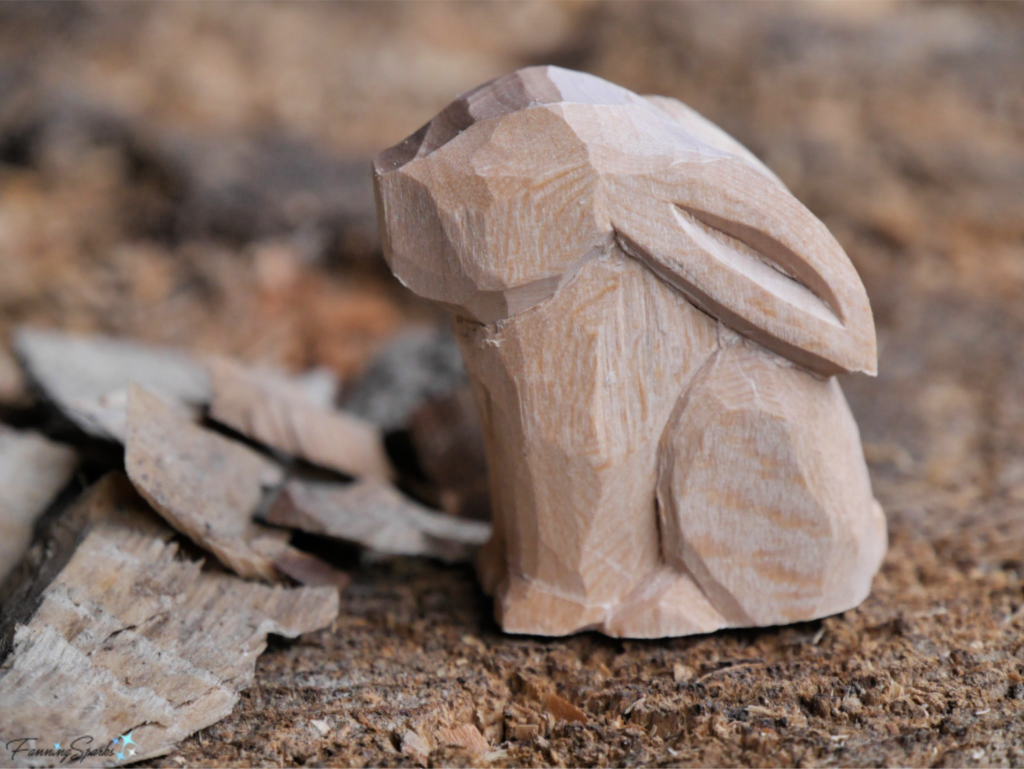
 Thanks again for following along with FanningSparks. I hope you enjoy reading the posts as much as I enjoy sharing them.
Thanks again for following along with FanningSparks. I hope you enjoy reading the posts as much as I enjoy sharing them.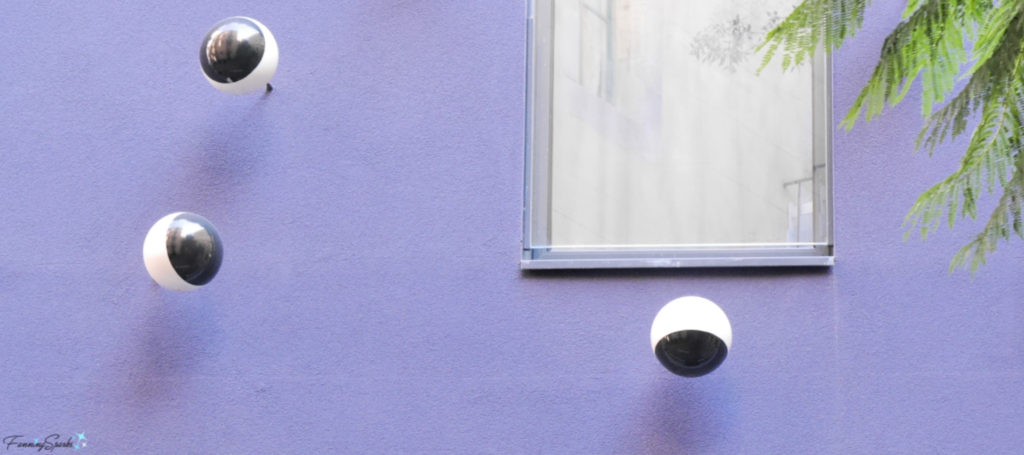

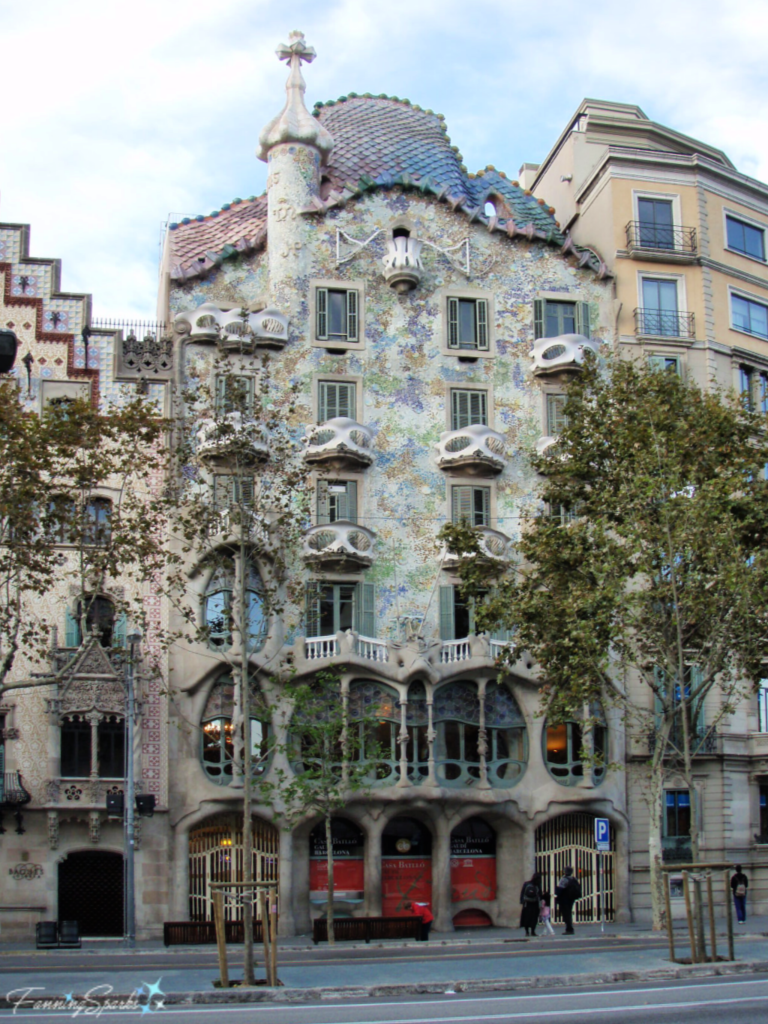
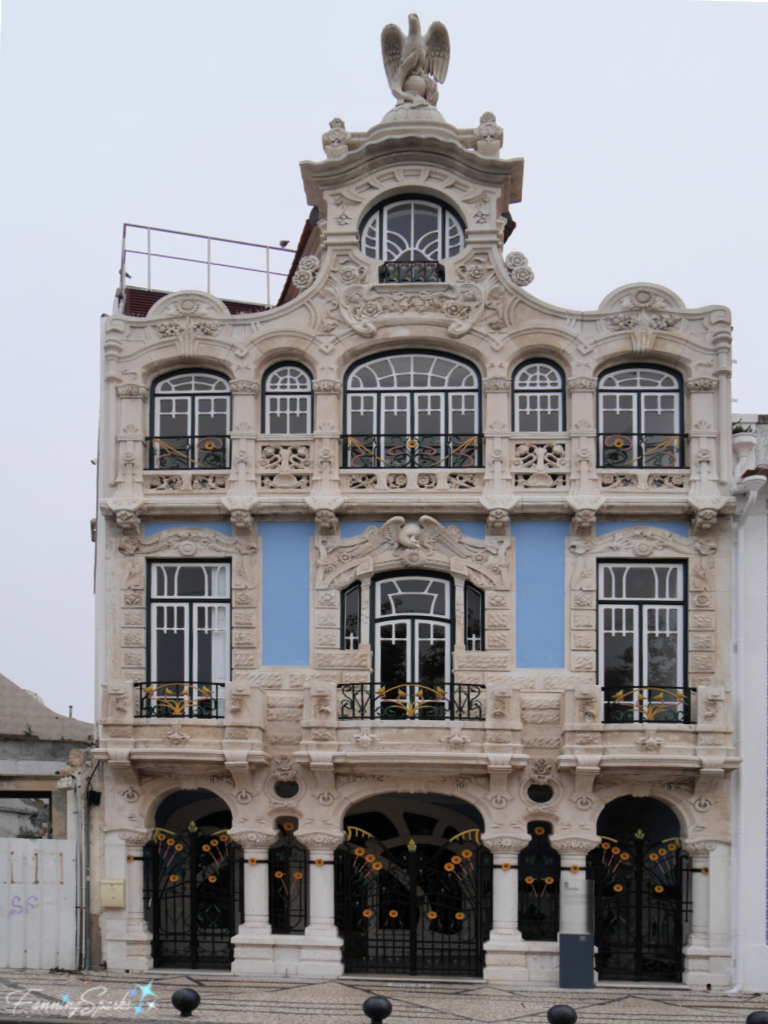
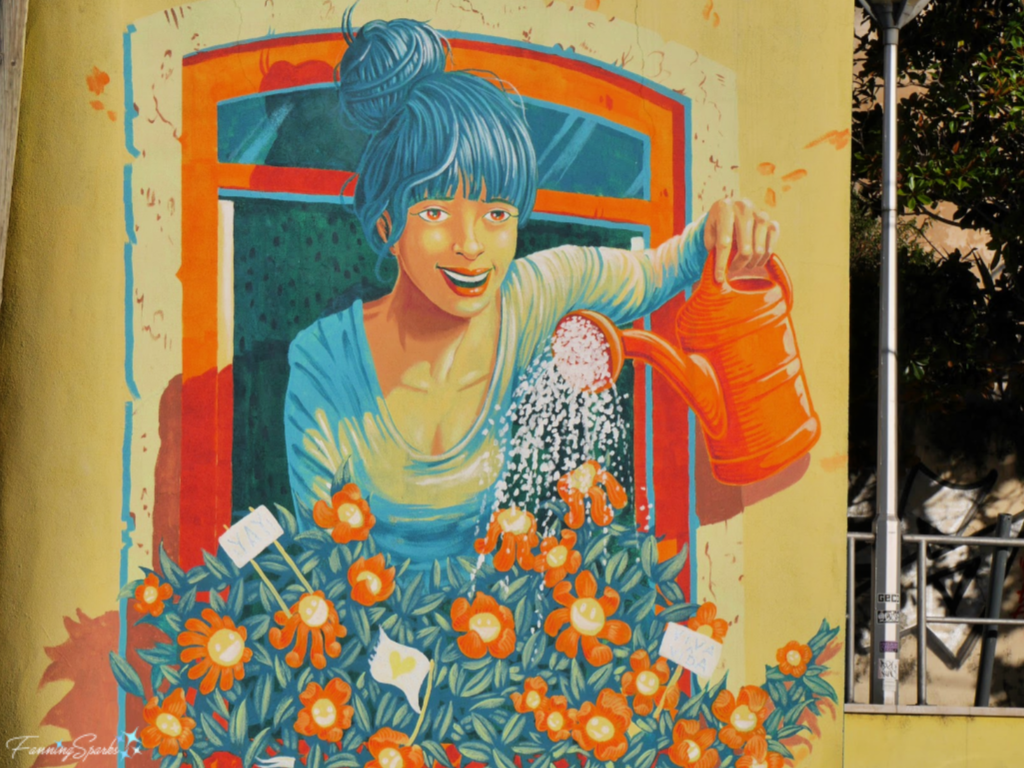
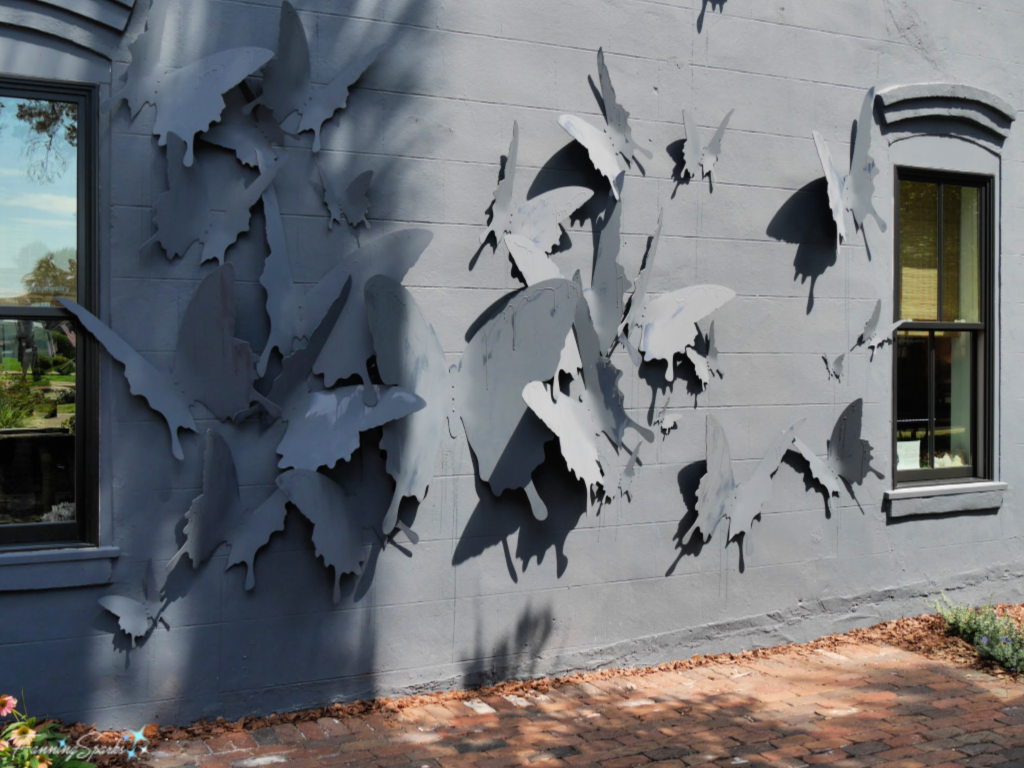
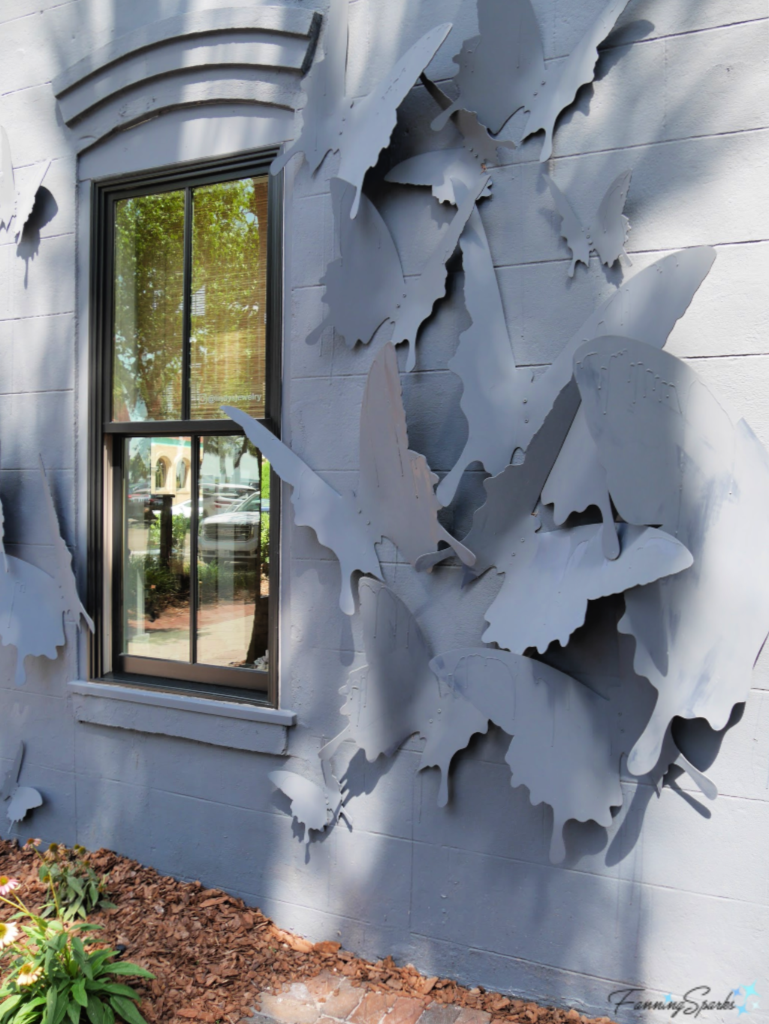
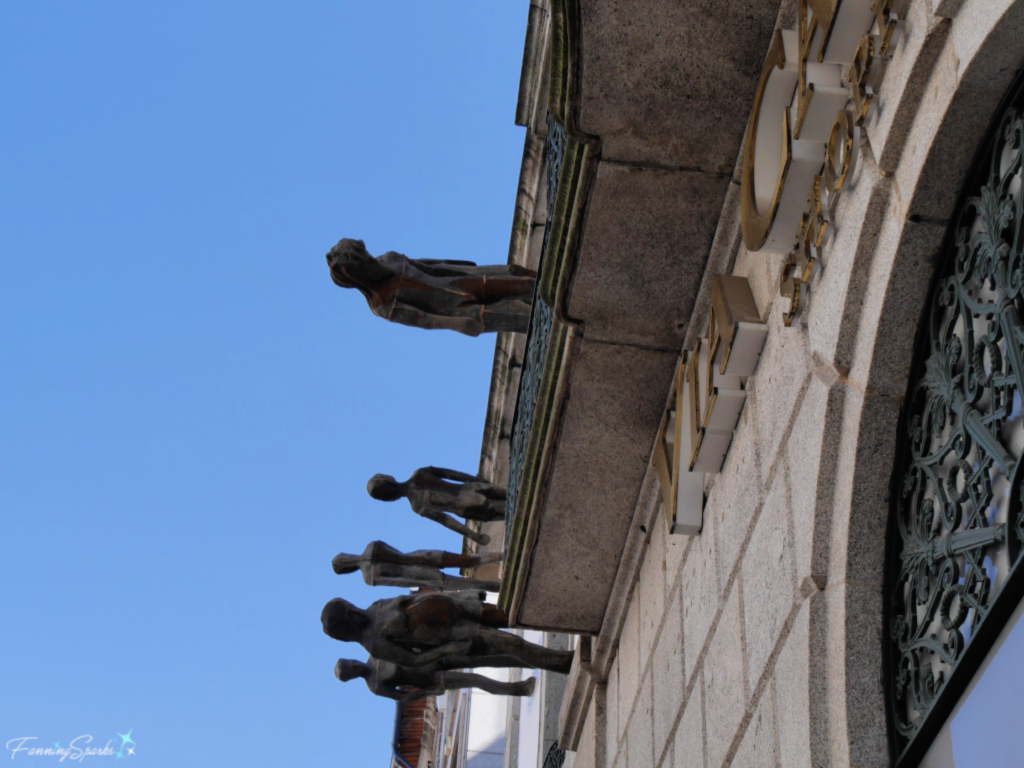

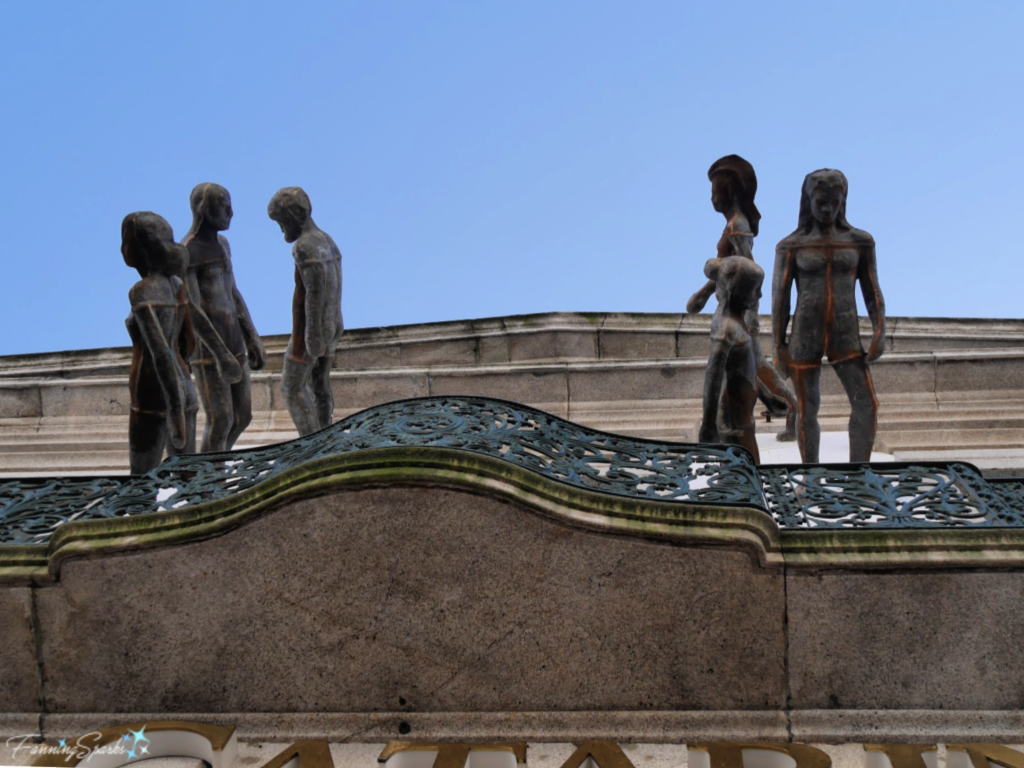

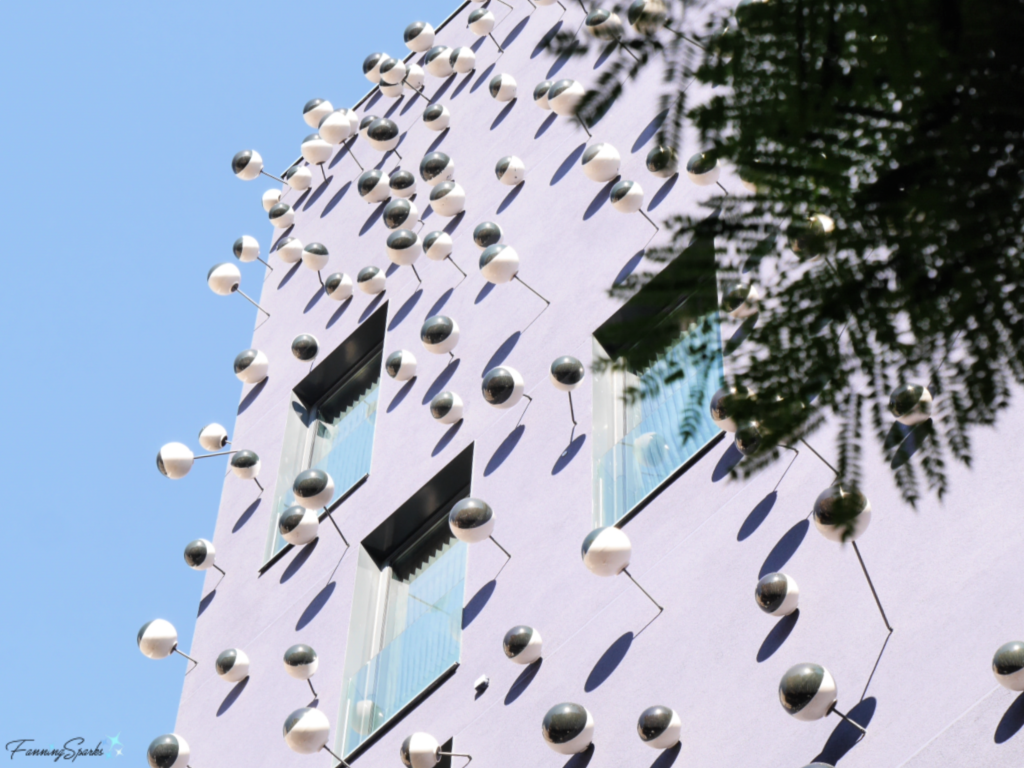
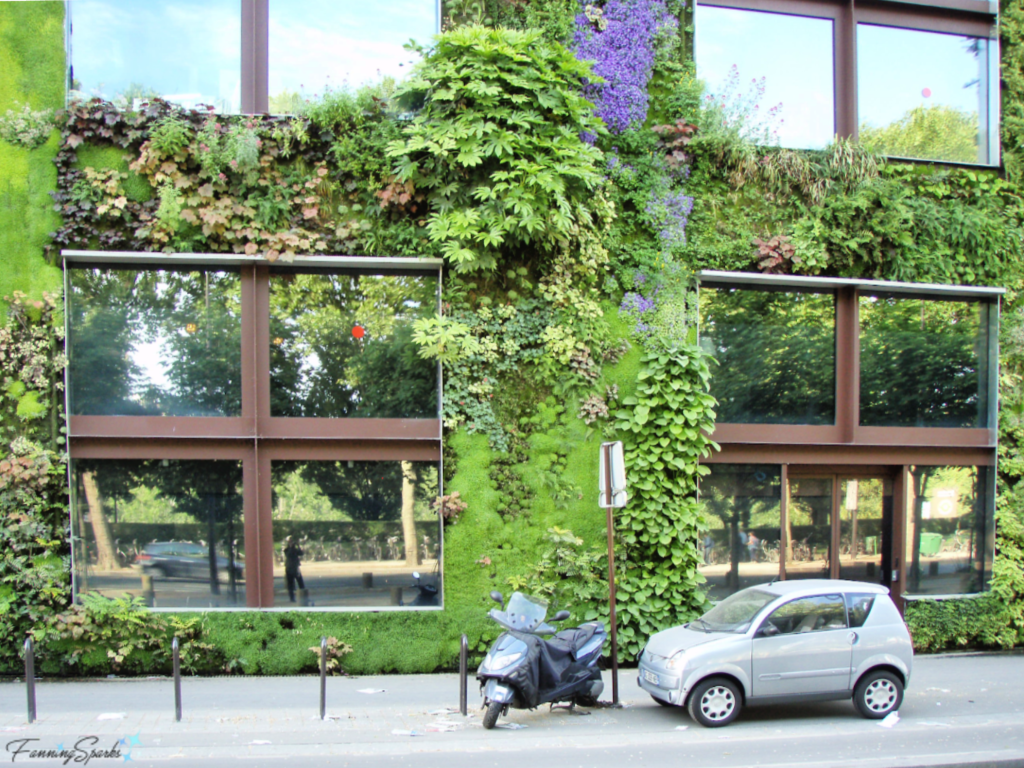
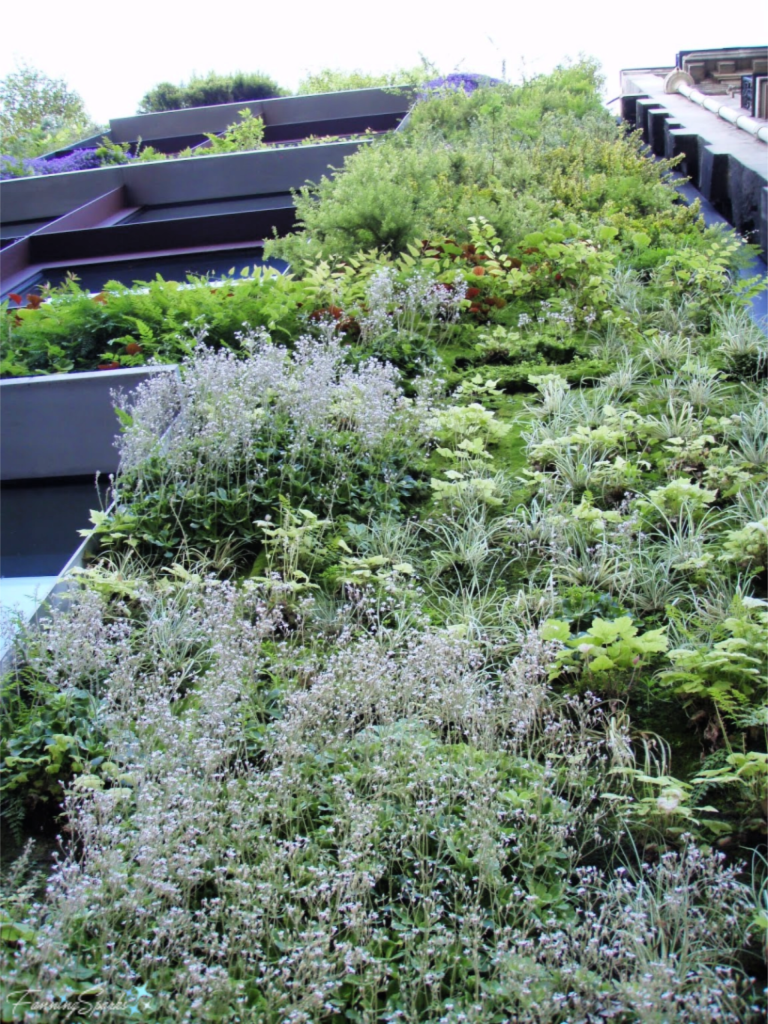
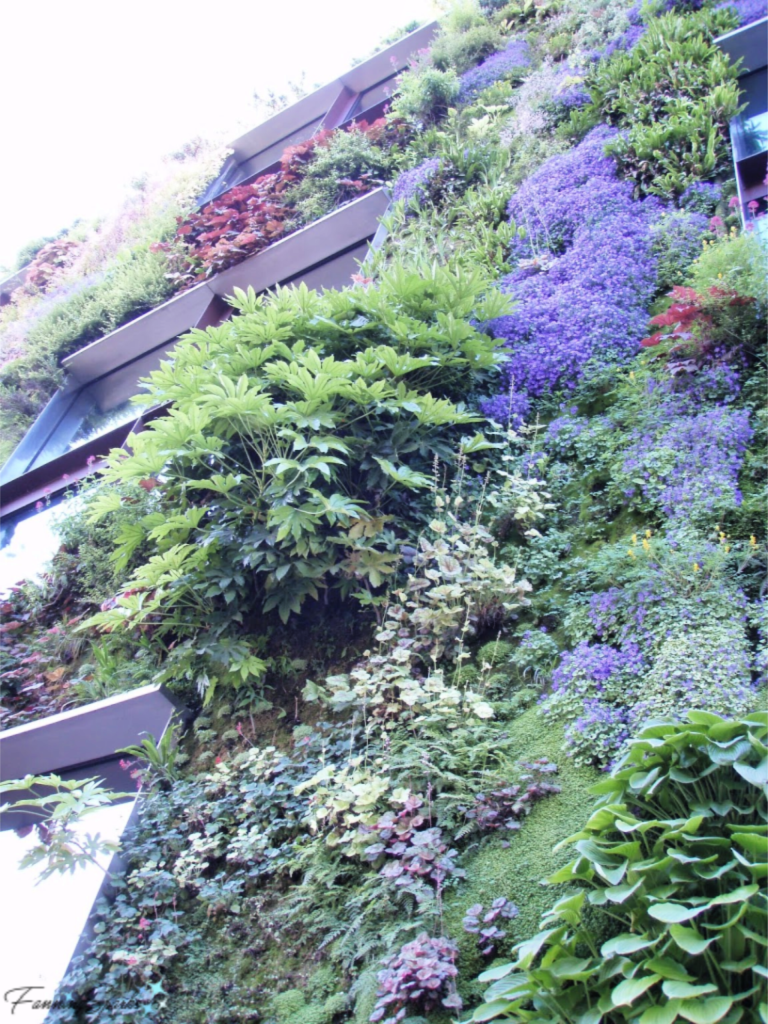
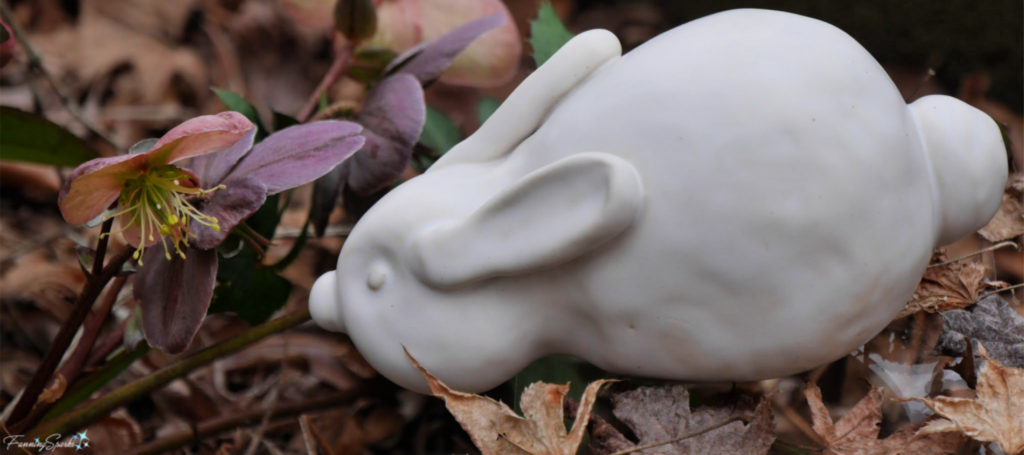
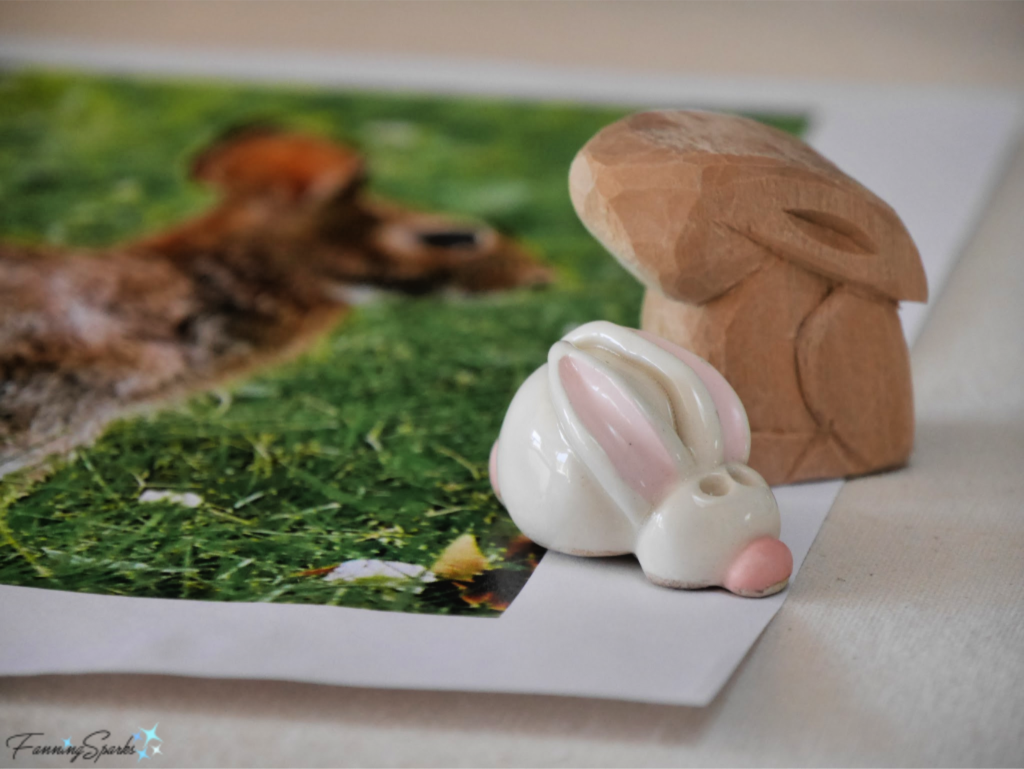
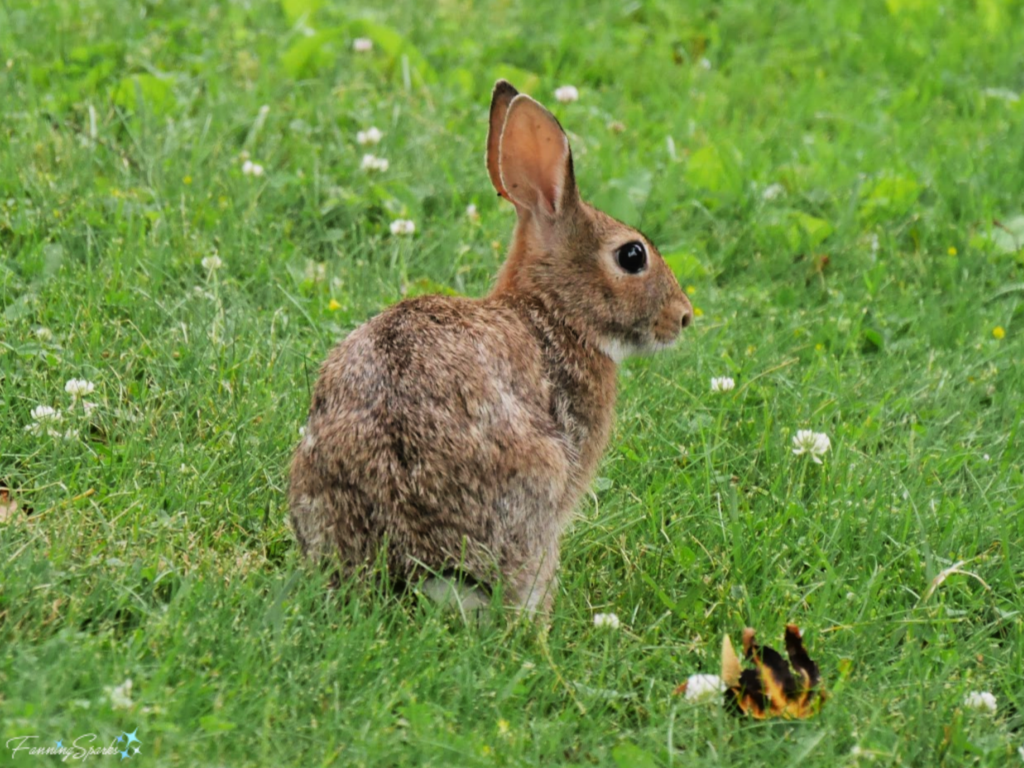
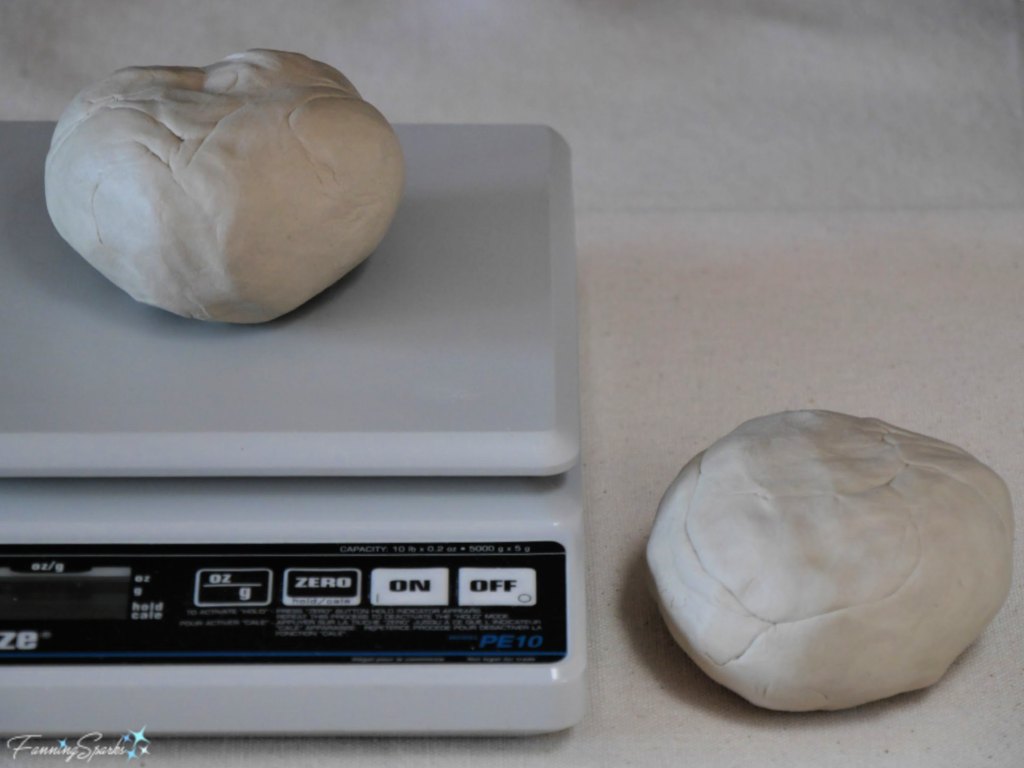
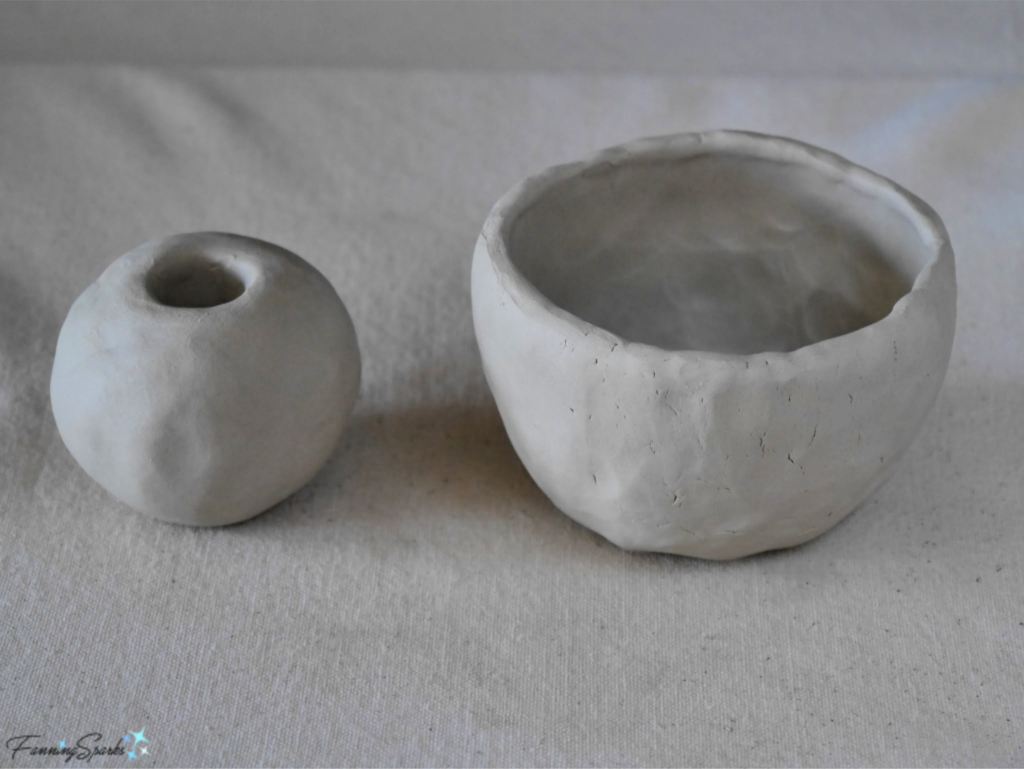
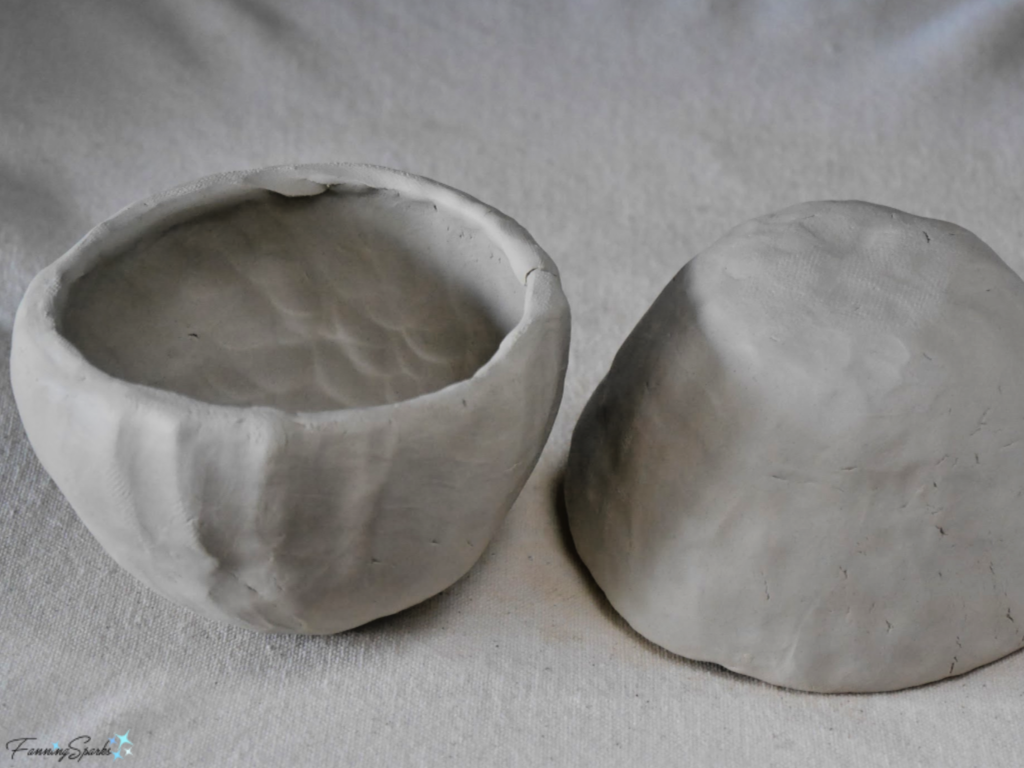
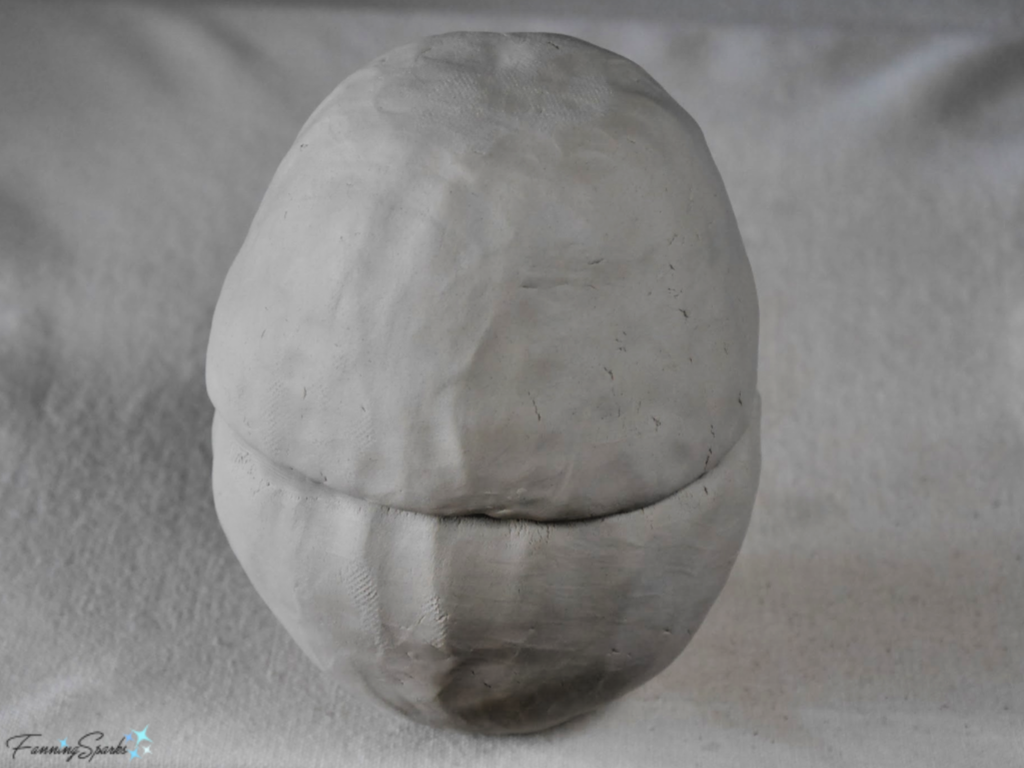
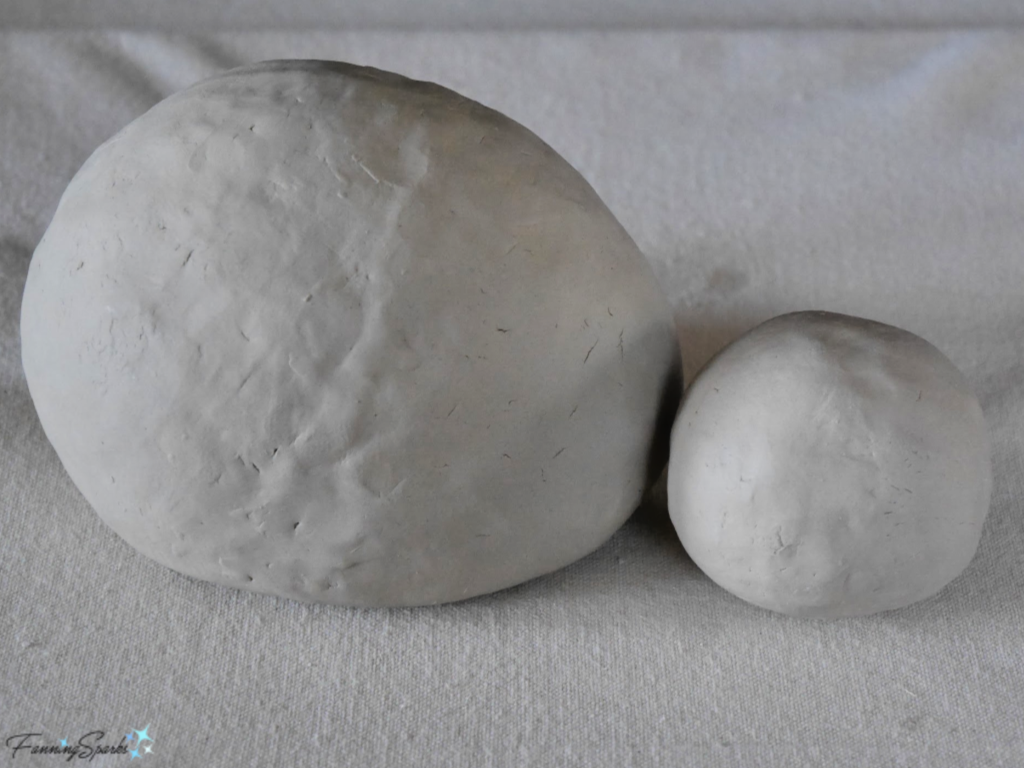
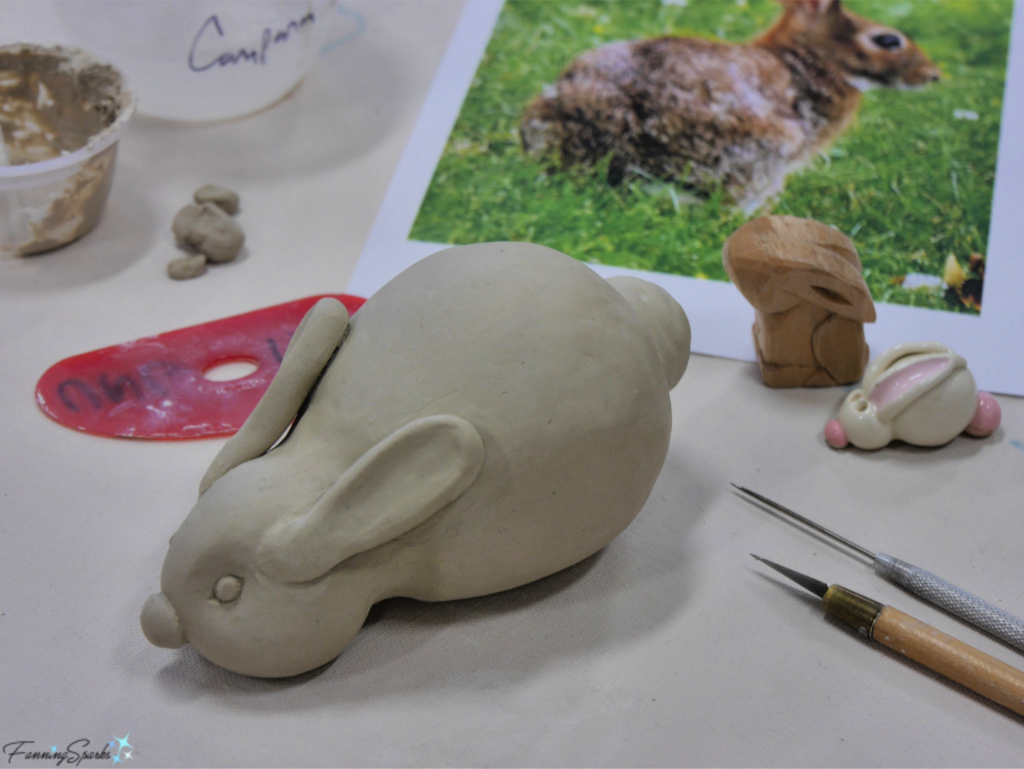
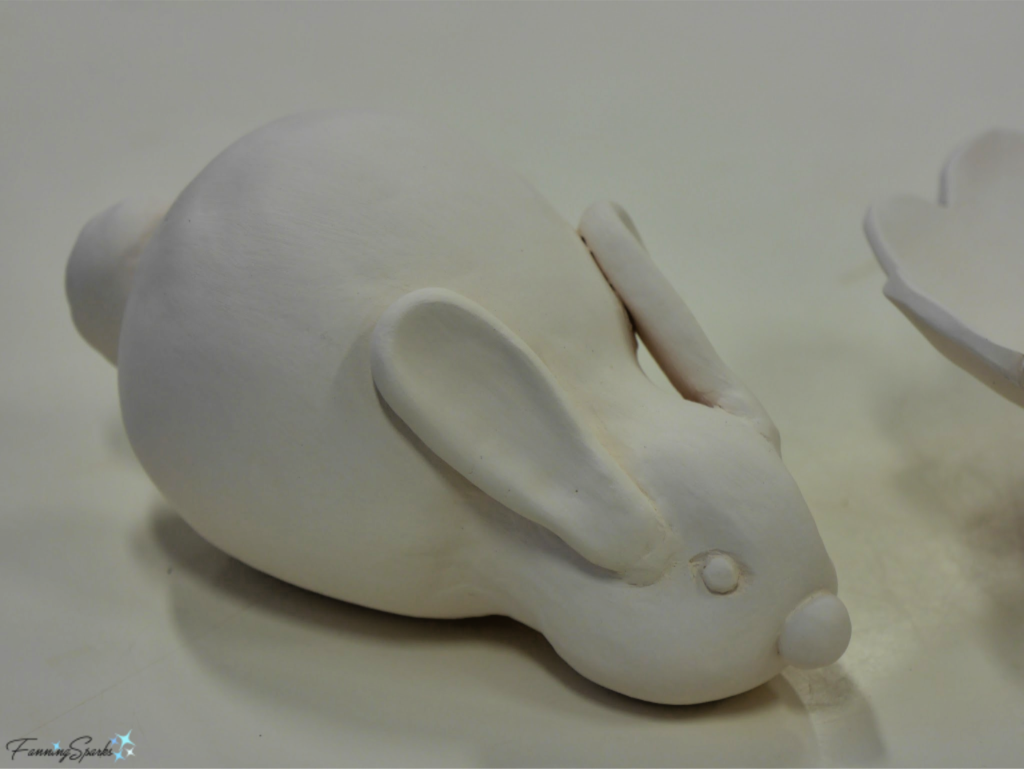 The final step was to glaze the piece. The School Street Pottery Studio, where I’ve been taking my class, has a great selection of glazes. Here’s the sample wall showing the final colors individually on white or red clay as well as in combinations. I chose a plain white glaze.
The final step was to glaze the piece. The School Street Pottery Studio, where I’ve been taking my class, has a great selection of glazes. Here’s the sample wall showing the final colors individually on white or red clay as well as in combinations. I chose a plain white glaze.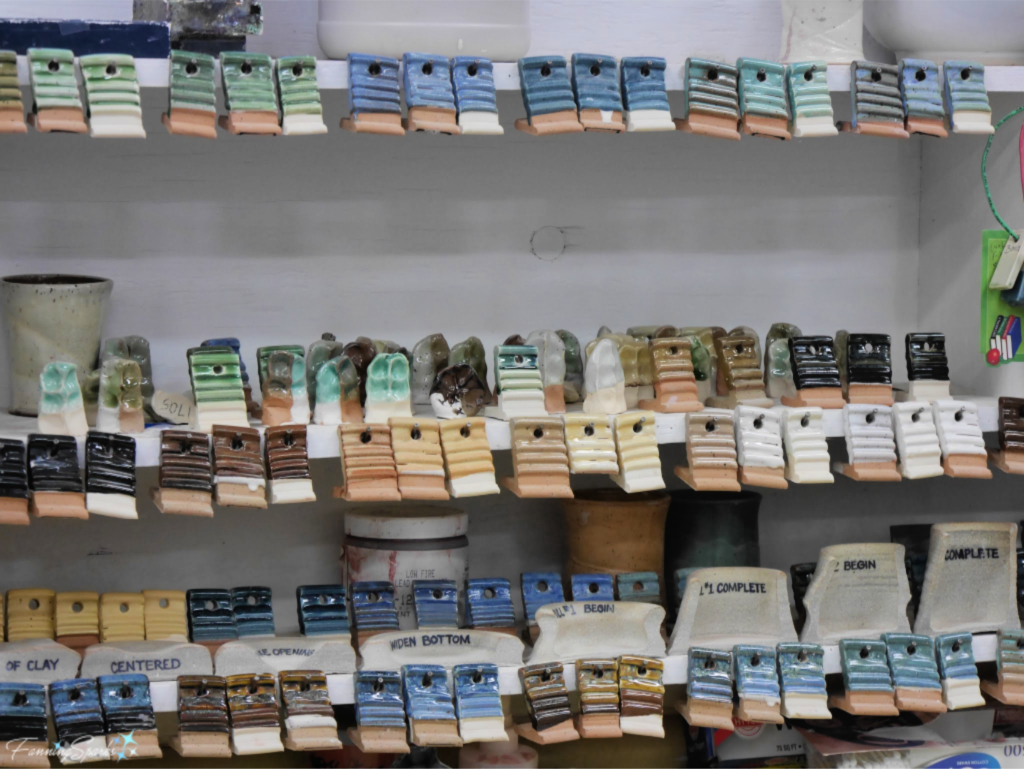
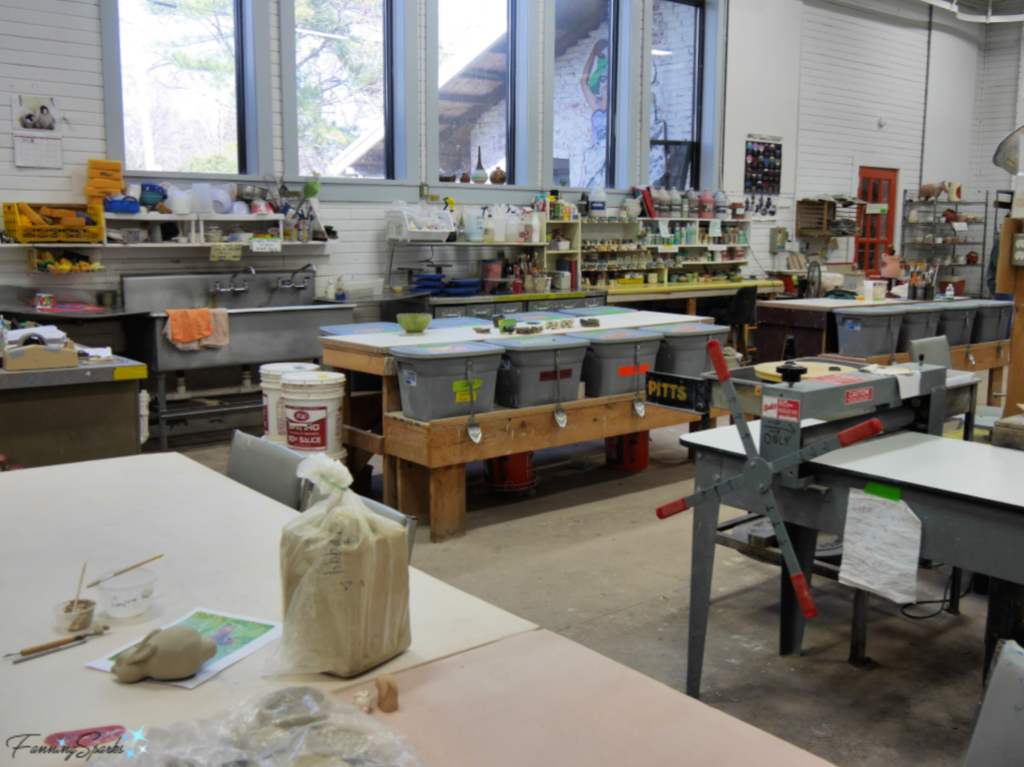 …and lots of equipment and tools for us to use.
…and lots of equipment and tools for us to use.
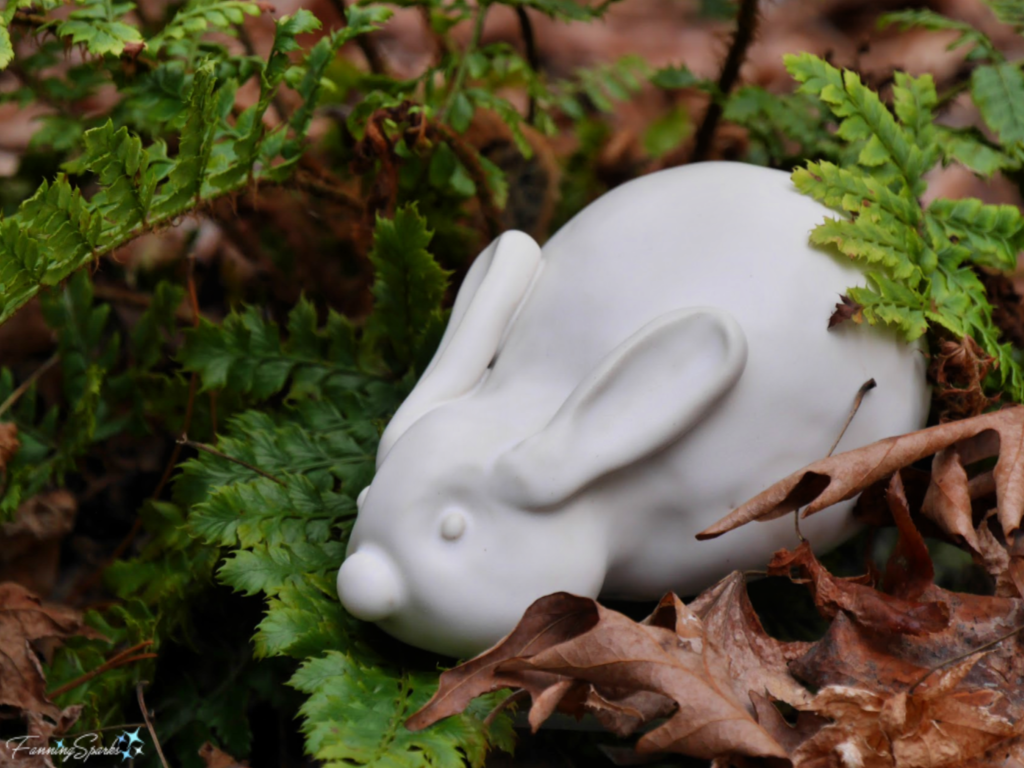
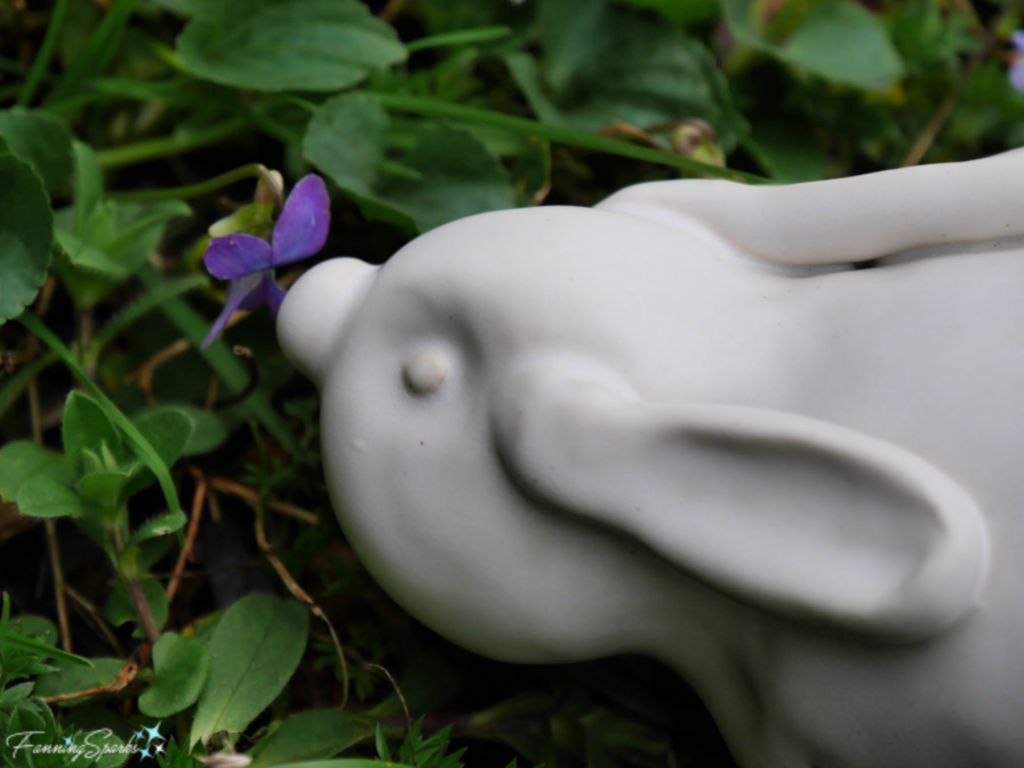

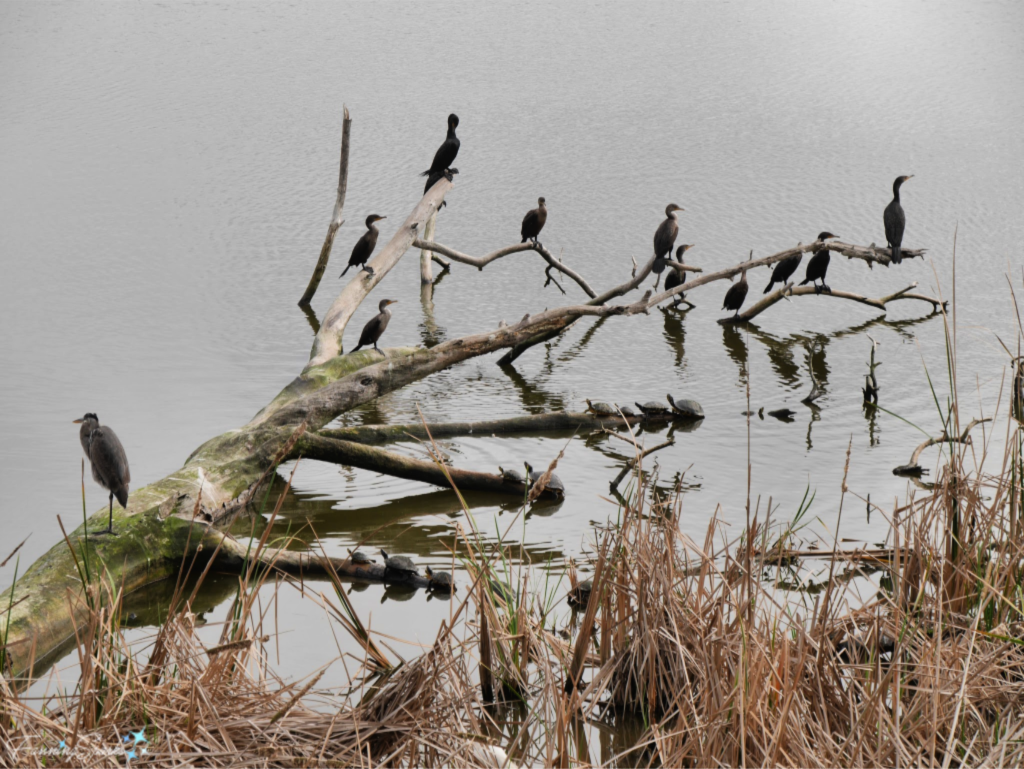
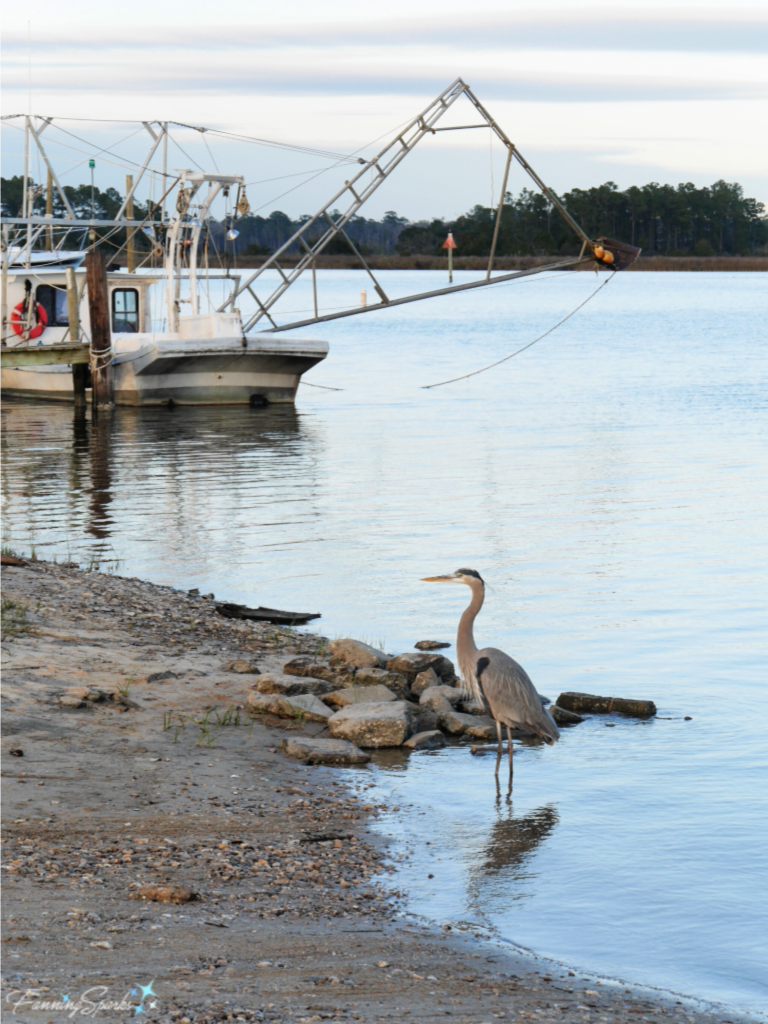
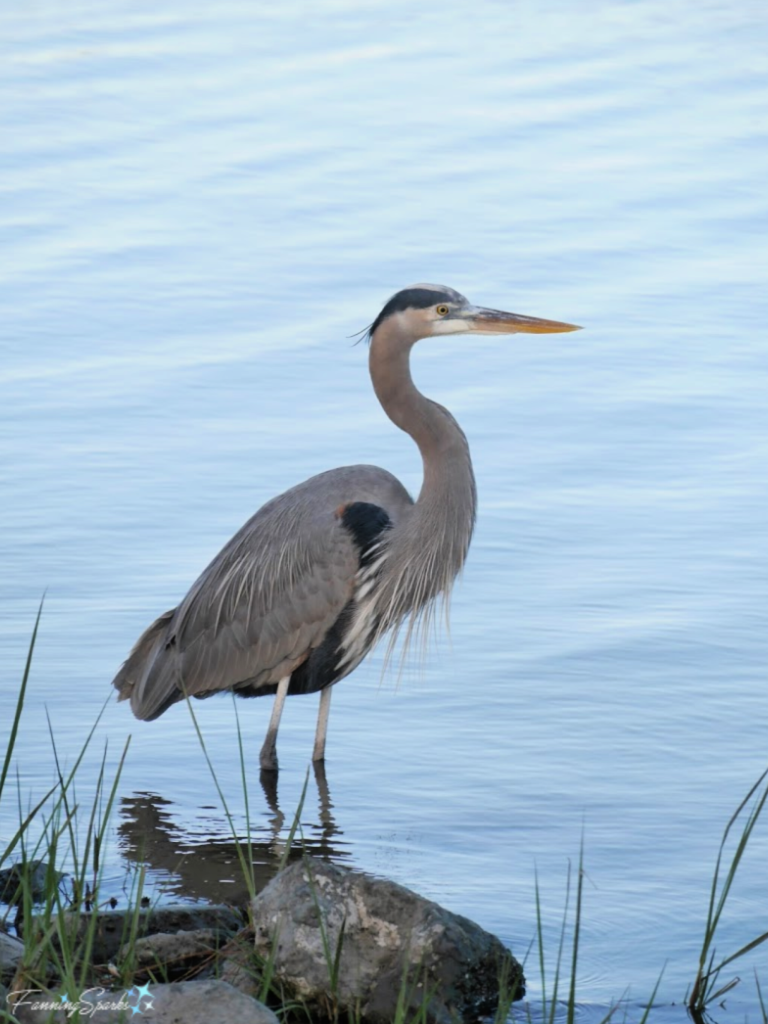
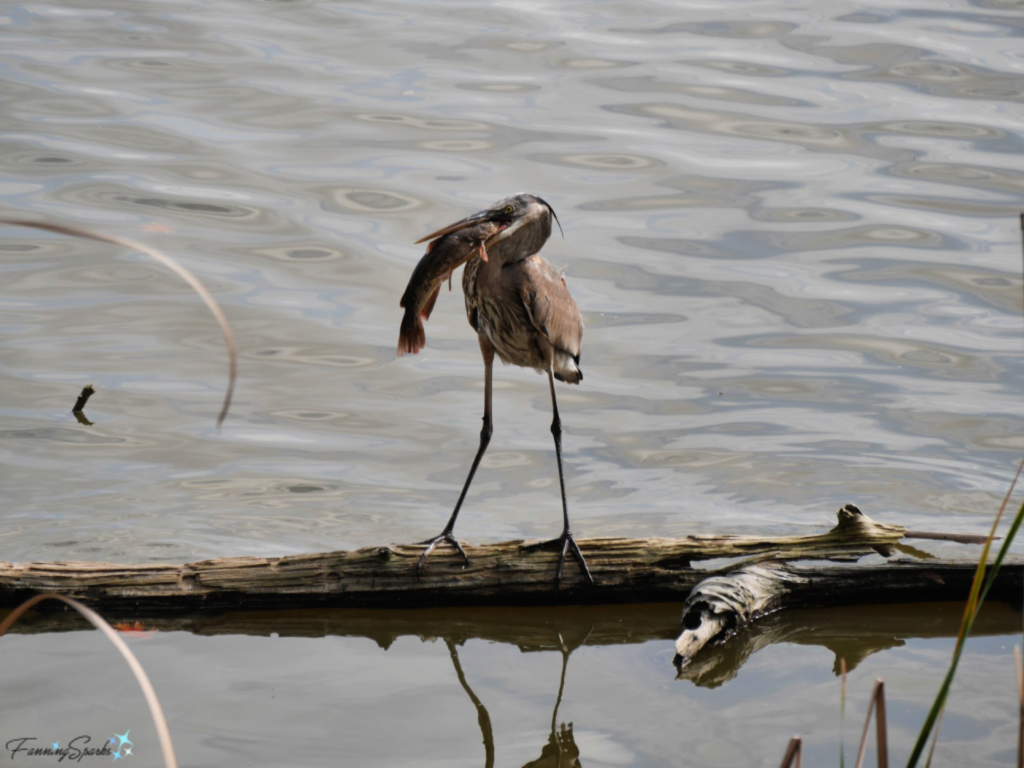
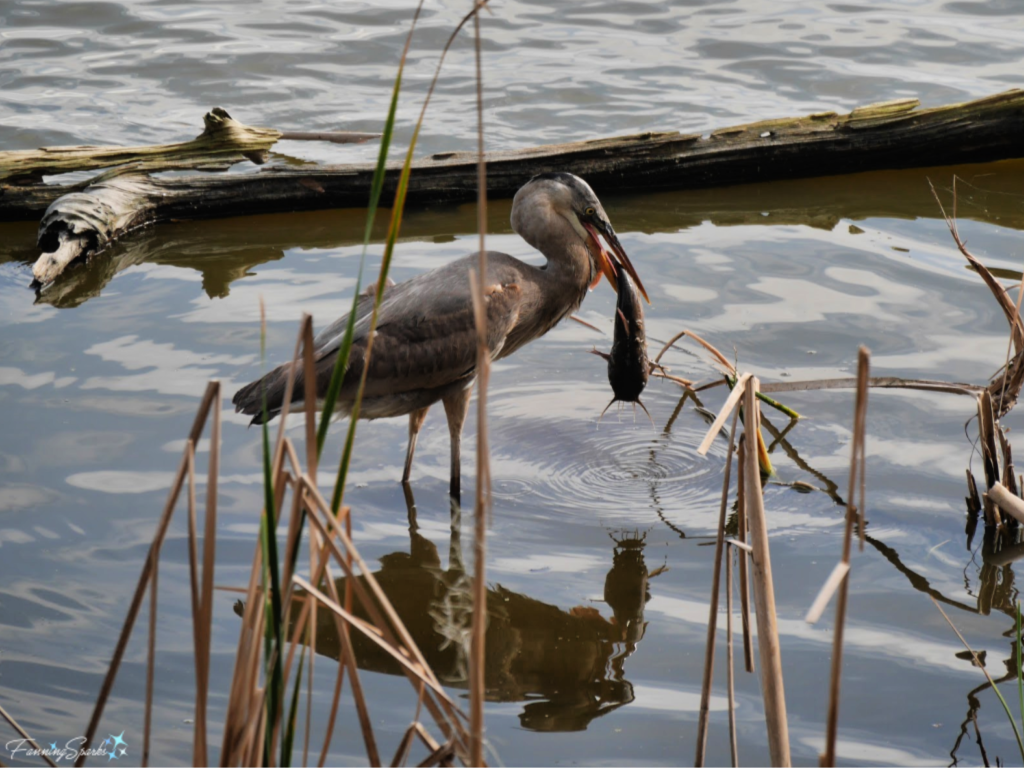


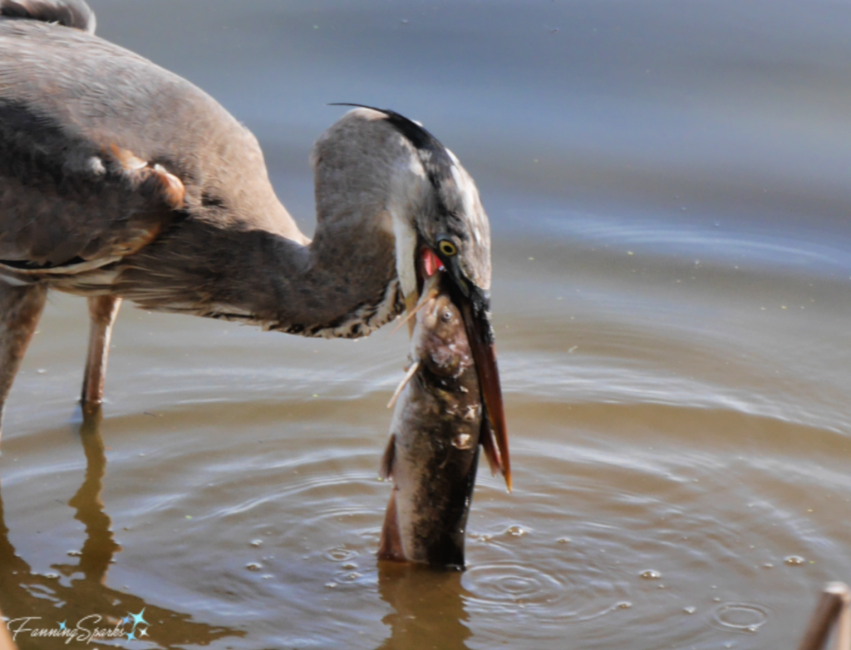
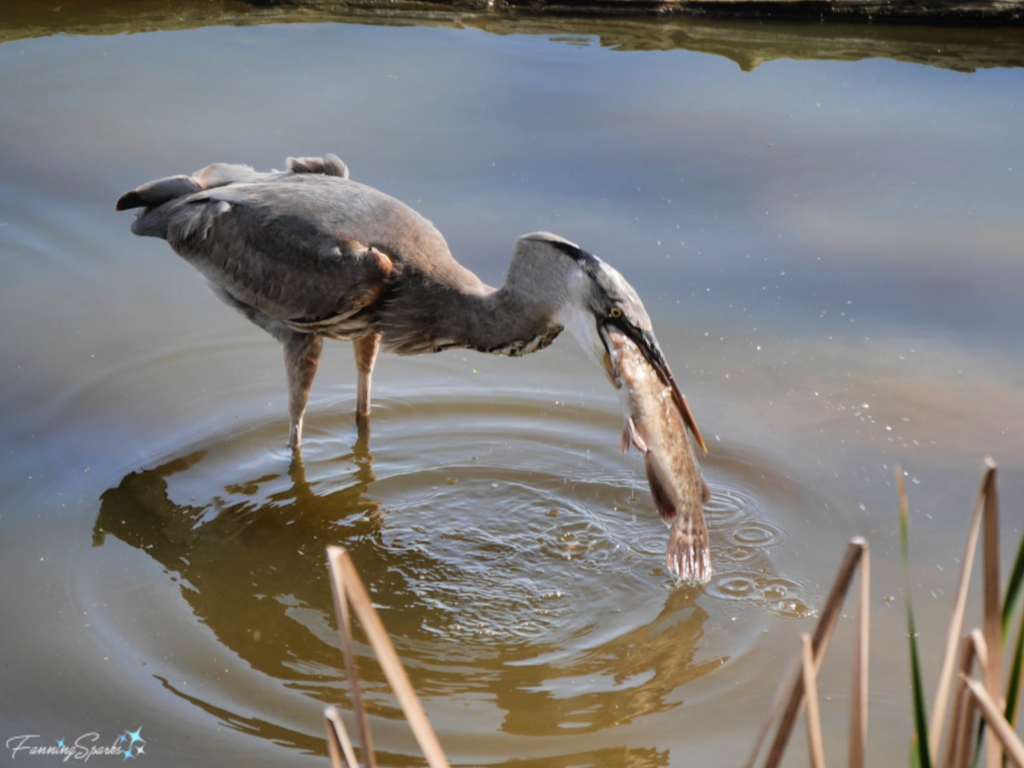 … and down its throat…
… and down its throat…